Elon Musk released two new troves of information about Twitter’s suppression of free speech on its platform and its handling of Donald Trump’s account. The first trove was revealed by independent journalist Matt Taibbi; the second was released by founder and editor of The Free Press, Bari Weiss, while the third – released Friday night – went back to Taibbi.
Below is the Twitter thread in which Weiss lays out how conservatives were stifled under Twitter’s previous leadership, followed by Taibbi’s Friday night thread.
A new #TwitterFiles investigation reveals that teams of Twitter employees build blacklists, prevent disfavored tweets from trending, and actively limit the visibility of entire accounts or even trending topics—all in secret, without informing users. Twitter once had a mission “to give everyone the power to create and share ideas and information instantly, without barriers.” Along the way, barriers nevertheless were erected.
Take, for example, Stanford’s Dr. Jay Bhattacharya who argued that Covid lockdowns would harm children. Twitter secretly placed him on a “Trends Blacklist,” which prevented his tweets from trending.
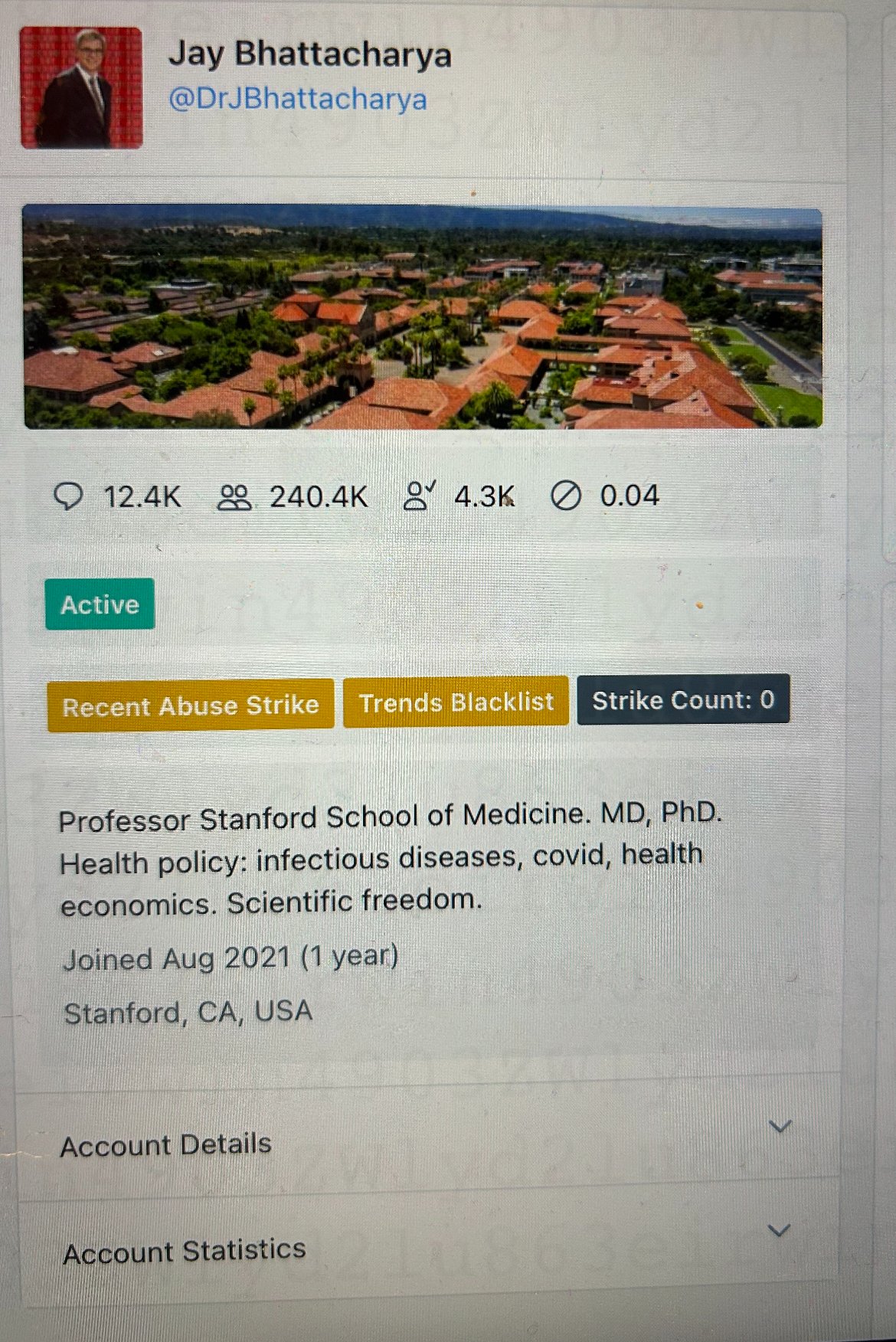
Or consider the popular right-wing talk show host, Dan Bongino, who at one point was slapped with a “Search Blacklist.”
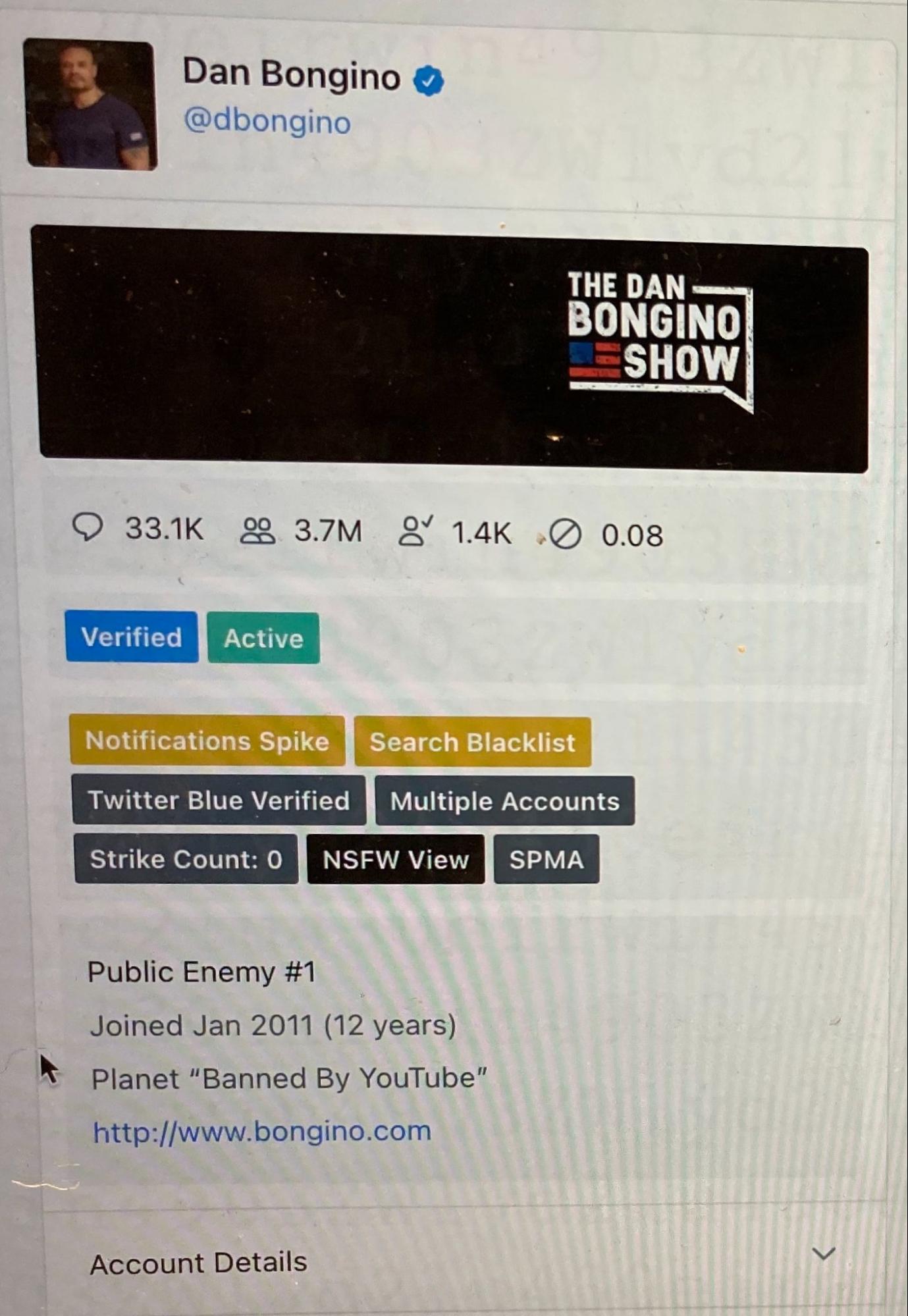
Twitter set the account of conservative activist Charlie Kirk to “Do Not Amplify.”
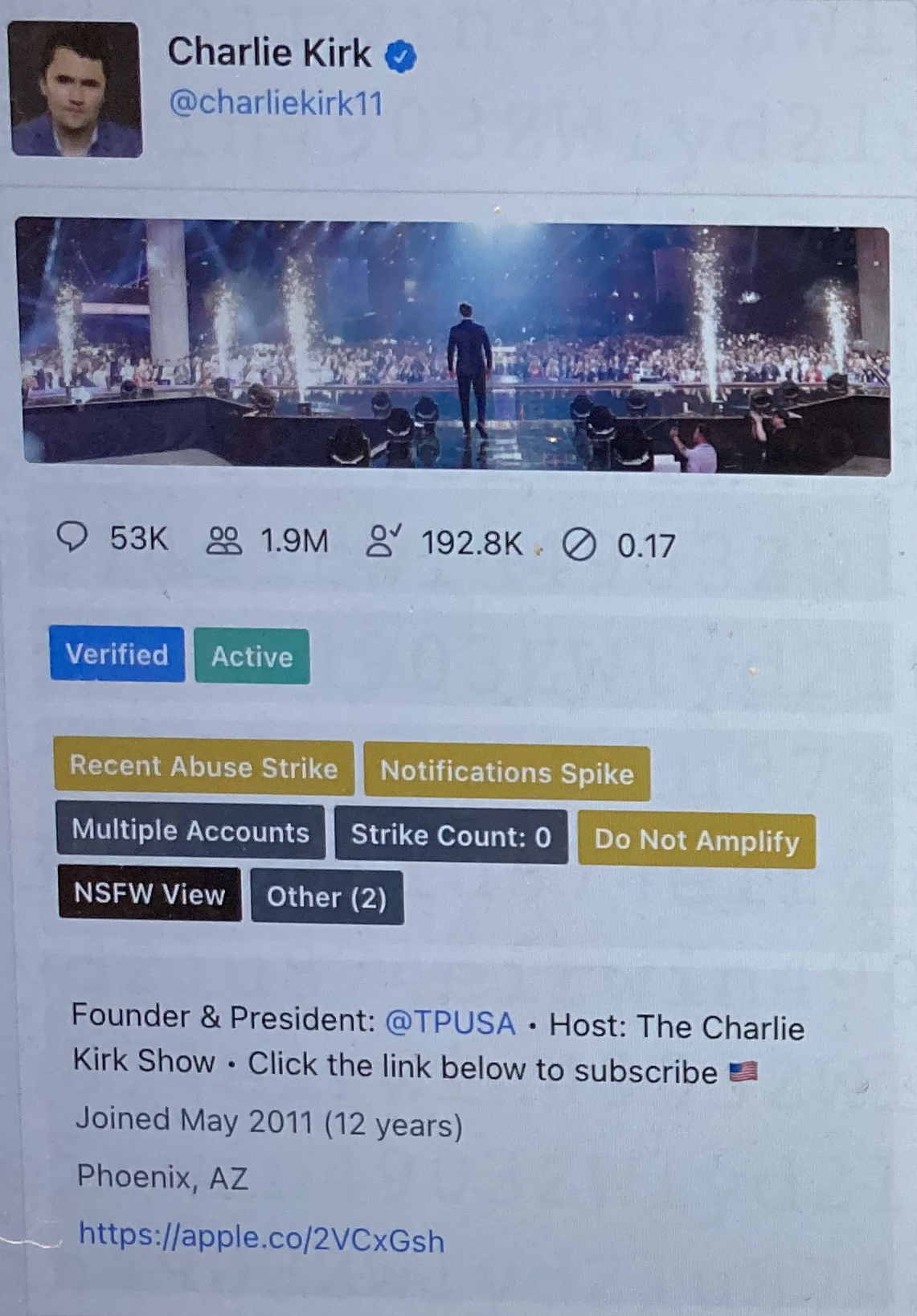
Twitter denied that it does such things. In 2018, Twitter’s Vijaya Gadde (then Head of Legal Policy and Trust) and Kayvon Beykpour (Head of Product) said: “We do not shadow ban.” They added: “And we certainly don’t shadow ban based on political viewpoints or ideology.”
What many people call “shadow banning,” Twitter executives and employees call “Visibility Filtering” or “VF.” Multiple high-level sources confirmed its meaning.
“Think about visibility filtering as being a way for us to suppress what people see to different levels. It’s a very powerful tool,” one senior Twitter employee told us.
“VF” refers to Twitter’s control over user visibility. It used VF to block searches of individual users; to limit the scope of a particular tweet’s discoverability; to block select users’ posts from ever appearing on the “trending” page; and from inclusion in hashtag searches. All without users’ knowledge.
“We control visibility quite a bit. And we control the amplification of your content quite a bit. And normal people do not know how much we do,” one Twitter engineer told us. Two additional Twitter employees confirmed.
The group that decided whether to limit the reach of certain users was the Strategic Response Team – Global Escalation Team, or SRT-GET. It often handled up to 200 “cases” a day. But there existed a level beyond official ticketing, beyond the rank-and-file moderators following the company’s policy on paper. That is the “Site Integrity Policy, Policy Escalation Support,” known as “SIP-PES.” This secret group included Head of Legal, Policy, and Trust (Vijaya Gadde), the Global Head of Trust & Safety (Yoel Roth), subsequent CEOs Jack Dorsey and Parag Agrawal, and others. This is where the biggest, most politically sensitive decisions got made. “Think high follower account, controversial,” another Twitter employee told us. For these “there would be no ticket or anything.”
One of the accounts that rose to this level of scrutiny was
@libsoftiktok —an account that was on the “Trends Blacklist” and was designated as “Do Not Take Action on User Without Consulting With SIP-PES.”
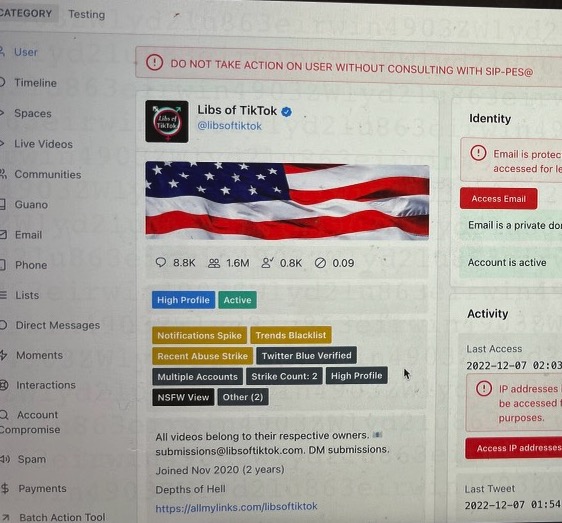
The account—which Chaya Raichik began in November 2020 and now boasts over 1.4 million followers—was subjected to six suspensions in 2022 alone, Raichik says. Each time, Raichik was blocked from posting for as long as a week. Twitter repeatedly informed Raichik that she had been suspended for violating Twitter’s policy against “hateful conduct.” But in an internal SIP-PES memo from October 2022, after her seventh suspension, the committee acknowledged that “LTT has not directly engaged in behavior violative of the Hateful Conduct policy.”
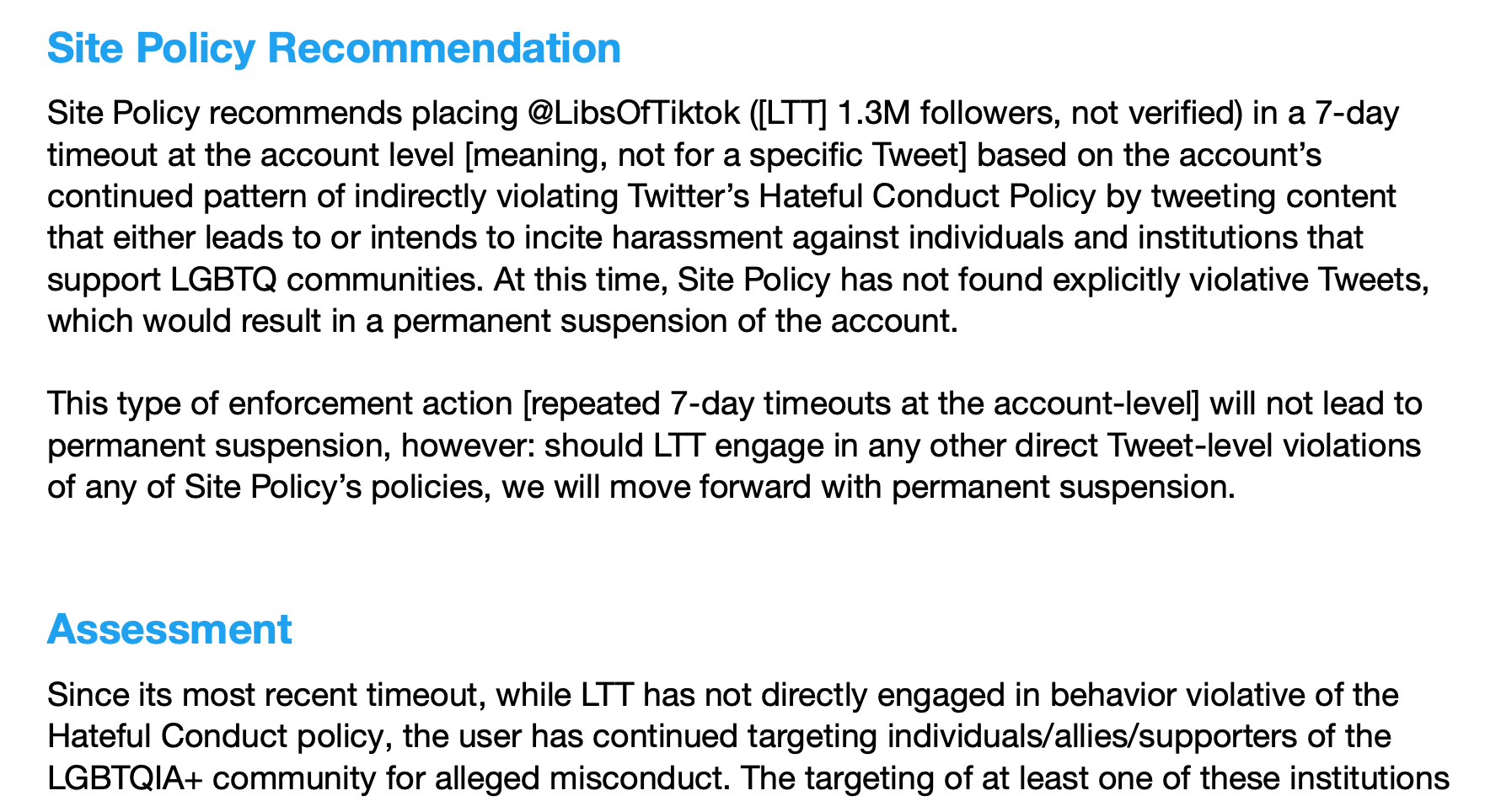
The committee justified her suspensions internally by claiming her posts encouraged online harassment of “hospitals and medical providers” by insinuating “that gender-affirming healthcare is equivalent to child abuse or grooming.”
Compare this to what happened when Raichik herself was doxxed on November 21, 2022. A photo of her home with her address was posted in a tweet that has garnered more than 10,000 likes. When Raichik told Twitter that her address had been disseminated she says Twitter Support responded with this message: “We reviewed the reported content, and didn’t find it to be in violation of the Twitter rules.” No action was taken. The doxxing tweet is still up.

In internal Slack messages, Twitter employees spoke of using technicalities to restrict the visibility of tweets and subjects. Here’s Yoel Roth, Twitter’s then Global Head of Trust & Safety, in a direct message to a colleague in early 2021:

Six days later, in a direct message with an employee on the Health, Misinformation, Privacy, and Identity research team, Roth requested more research to support expanding “non-removal policy interventions like disabling engagements and deamplification/visibility filtering.”
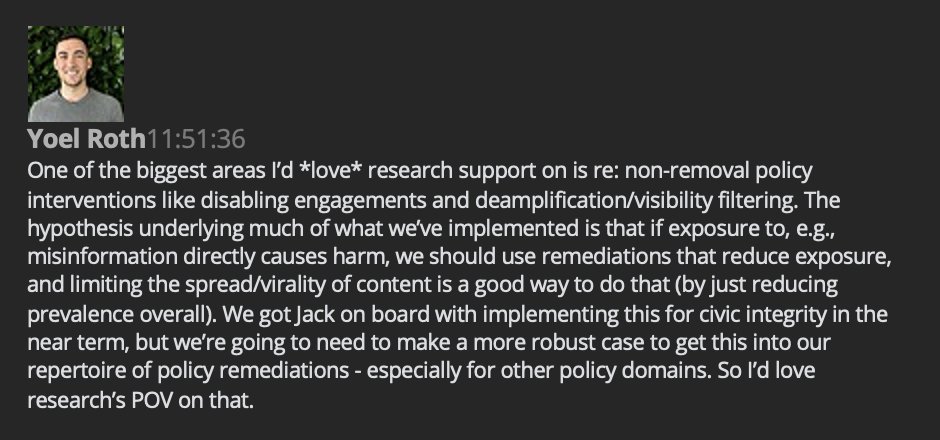
Roth wrote: “The hypothesis underlying much of what we’ve implemented is that if exposure to, e.g., misinformation directly causes harm, we should use remediations that reduce exposure, and limiting the spread/virality of content is a good way to do that.”
He added: “We got Jack on board with implementing this for civic integrity in the near term, but we’re going to need to make a more robust case to get this into our repertoire of policy remediations – especially for other policy domains.”
____
Taibbi’s Twitter Thread:
THREAD: The Twitter Files THE REMOVAL OF DONALD TRUMP Part One: October 2020-January 6th
The world knows much of the story of what happened between riots at the Capitol on January 6th, and the removal of President Donald Trump from Twitter on January 8th. We’ll show you what hasn’t been revealed: the erosion of standards within the company in months before J6, decisions by high-ranking executives to violate their own policies, and more, against the backdrop of ongoing, documented interaction with federal agencies.
Whatever your opinion on the decision to remove Trump that day, the internal communications at Twitter between January 6th-January 8th have clear historical import. Even Twitter’s employees understood in the moment it was a landmark moment in the annals of speech.
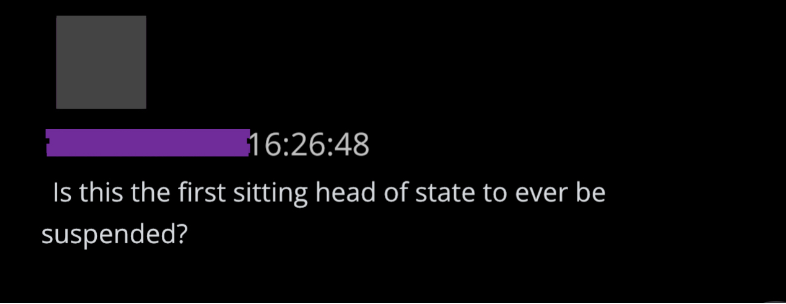
As soon as they finished banning Trump, Twitter execs started processing new power. They prepared to ban future presidents and White Houses – perhaps even Joe Biden. The “new administration,” says one exec, “will not be suspended by Twitter unless absolutely necessary.”

Twitter executives removed Trump in part over what one executive called the “context surrounding”: actions by Trump and supporters “over the course of the election and frankly last 4+ years.” In the end, they looked at a broad picture. But that approach can cut both ways.

The bulk of the internal debate leading to Trump’s ban took place in those three January days. However, the intellectual framework was laid in the months preceding the Capitol riots. Before J6, Twitter was a unique mix of automated, rules-based enforcement, and more subjective moderation by senior executives. As Bari Weiss reported, the firm had a vast array of tools for manipulating visibility, most all of which were thrown at Trump (and others) pre-J6. As the election approached, senior executives – perhaps under pressure from federal agencies, with whom they met more as time progressed – increasingly struggled with rules, and began to speak of “vios” as pretexts to do what they’d likely have done anyway.
After J6, internal Slacks show Twitter executives getting a kick out of intensified relationships with federal agencies. Here’s Trust and Safety head Yoel Roth, lamenting a lack of “generic enough” calendar descriptions to concealing his “very interesting” meeting partners.

These initial reports are based on searches for docs linked to prominent executives, whose names are already public. They include Roth, former trust and policy chief Vijaya Gadde, and recently plank-walked Deputy General Counsel (and former top FBI lawyer) Jim Baker.
One particular slack channel offers an unique window into the evolving thinking of top officials in late 2020 and early 2021. On October 8th, 2020, executives opened a channel called “us2020_xfn_enforcement.” Through J6, this would be home for discussions about election-related removals, especially ones that involved “high-profile” accounts (often called “VITs” or “Very Important Tweeters”).
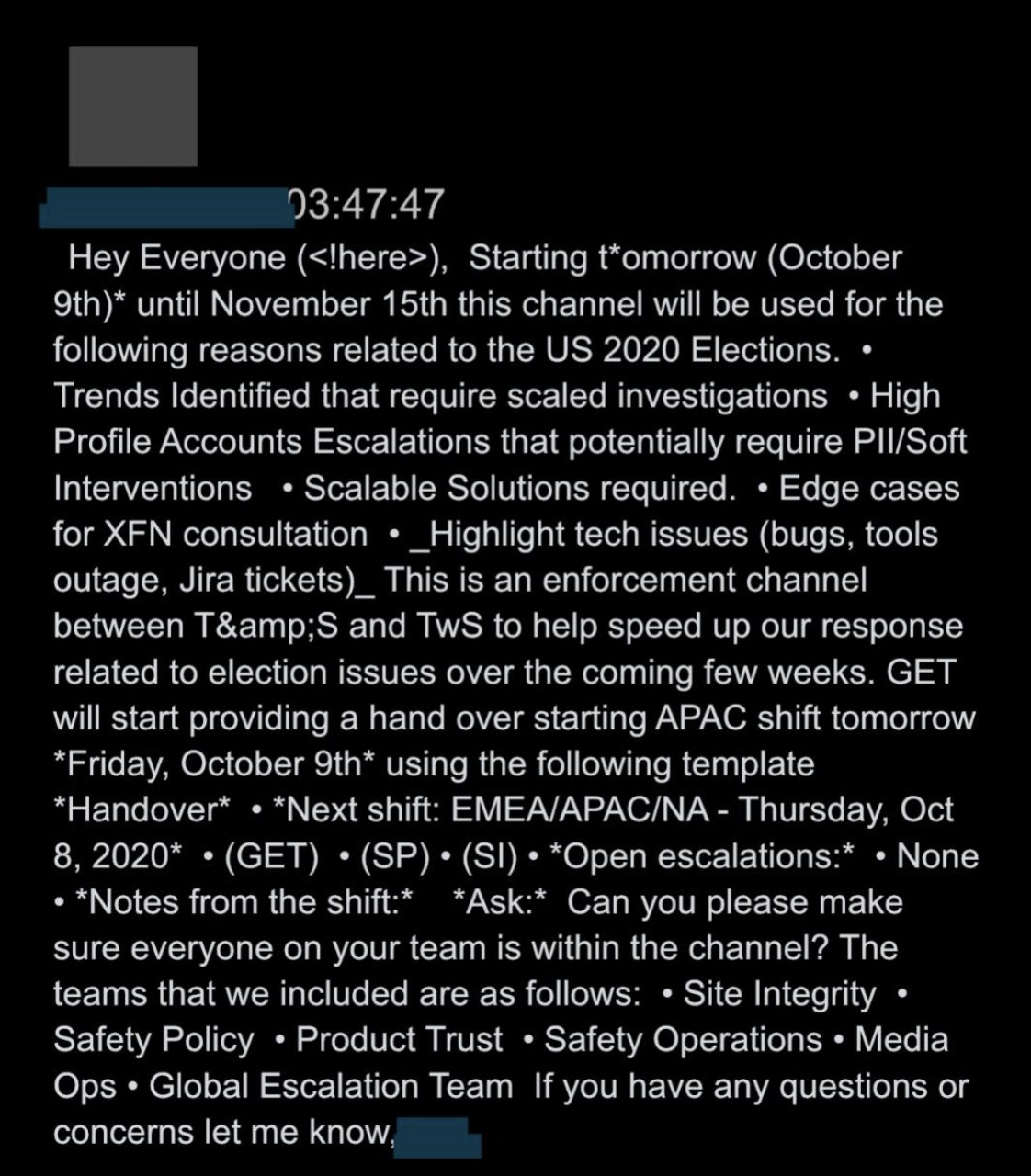
There was at least some tension between Safety Operations – a larger department whose staffers used a more rules-based process for addressing issues like porn, scams, and threats – and a smaller, more powerful cadre of senior policy execs like Roth and Gadde. The latter group were a high-speed Supreme Court of moderation, issuing content rulings on the fly, often in minutes and based on guesses, gut calls, even Google searches, even in cases involving the President.
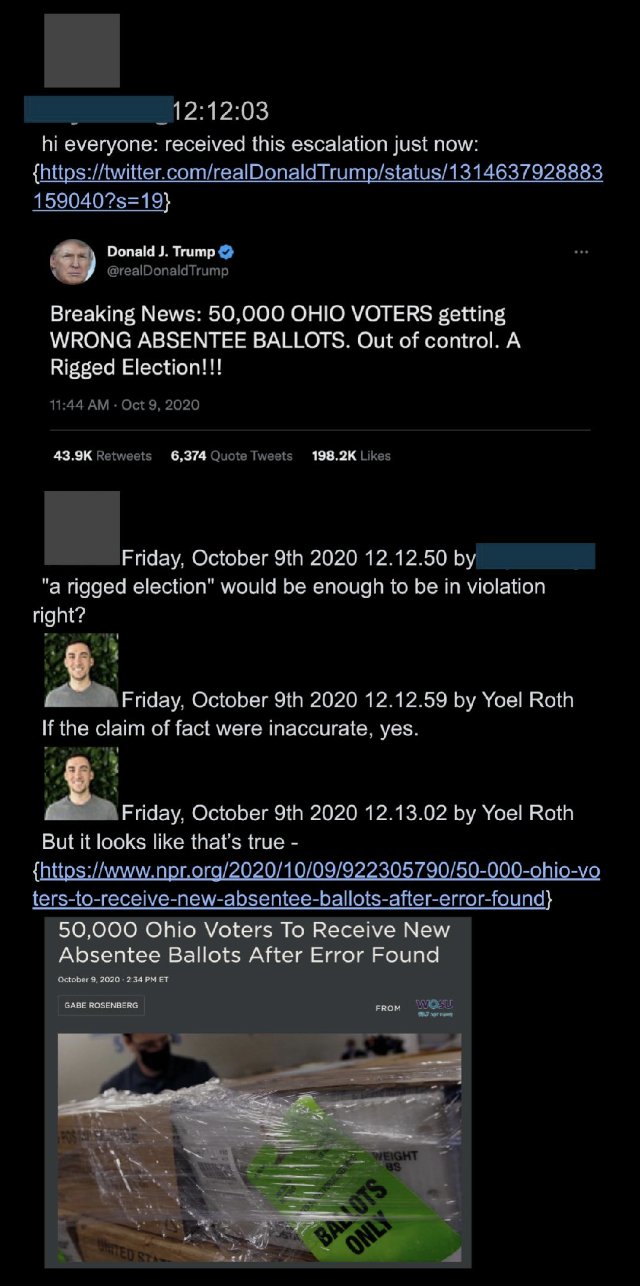
During this time, executives were also clearly liaising with federal enforcement and intelligence agencies about moderation of election-related content. While we’re still at the start of reviewing the #TwitterFiles, we’re finding out more about these interactions every day. Policy Director Nick Pickles is asked if they should say Twitter detects “misinfo” through “ML, human review, and **partnerships with outside experts?*” The employee asks, “I know that’s been a slippery process… not sure if you want our public explanation to hang on that.”

Pickles quickly asks if they could “just say “partnerships.” After a pause, he says, “e.g. not sure we’d describe the FBI/DHS as experts.” 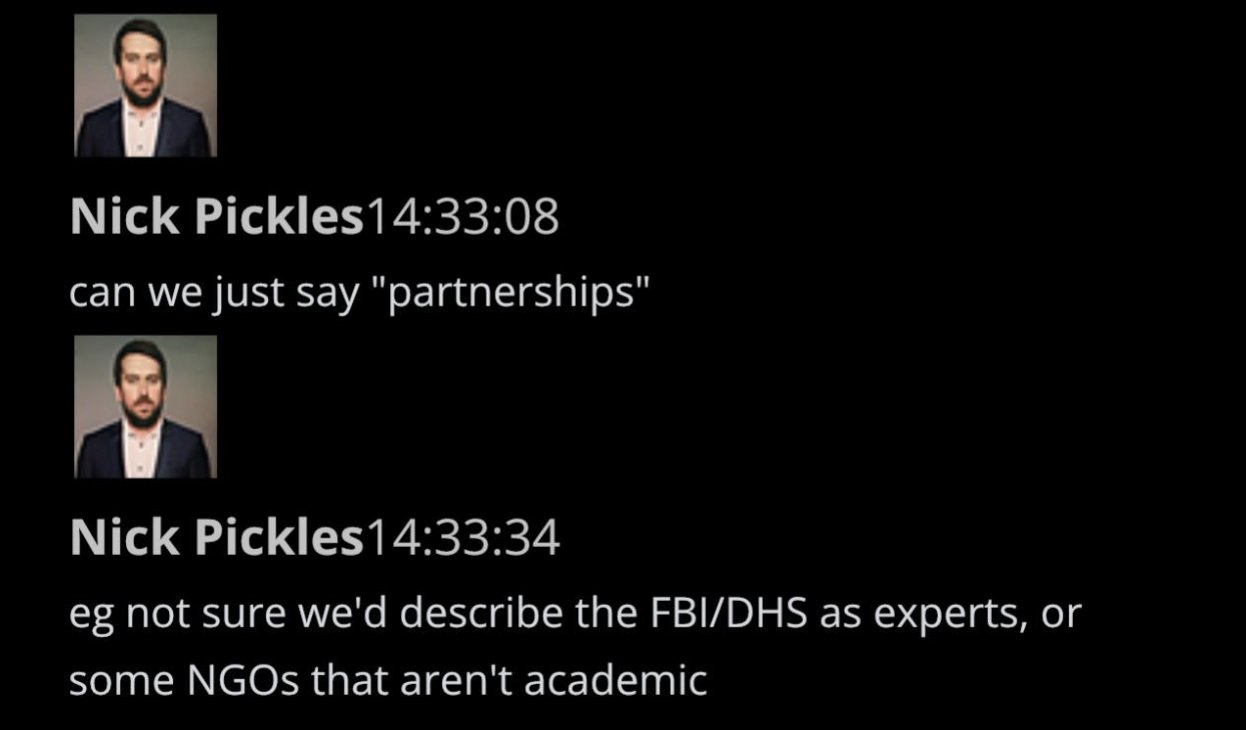
his post about the Hunter Biden laptop situation shows that Roth not only met weekly with the FBI and DHS, but with the Office of the Director of National Intelligence (DNI):
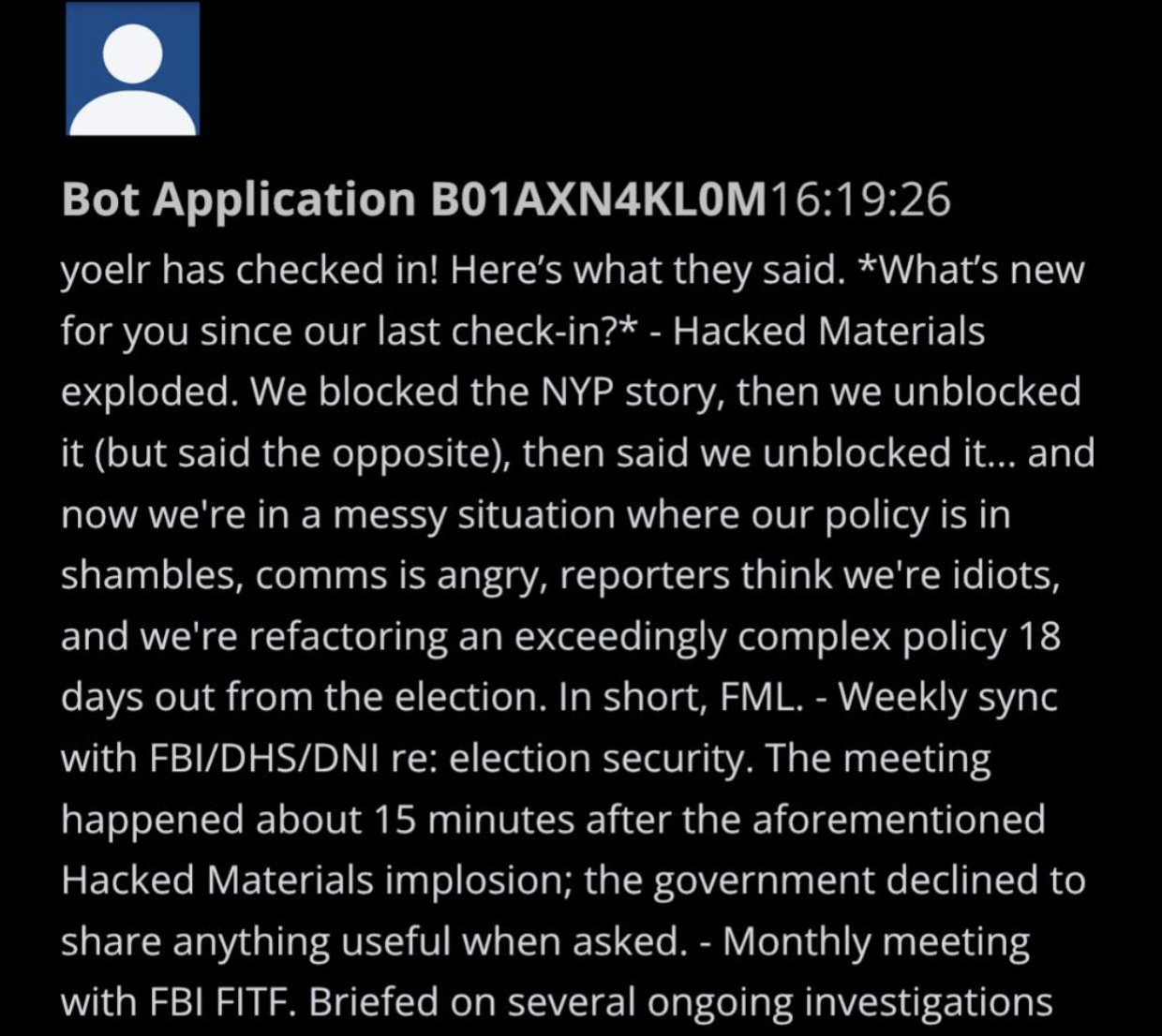
Roth’s report to FBI/DHS/DNI is almost farcical in its self-flagellating tone: “We blocked the NYP story, then unblocked it (but said the opposite)… comms is angry, reporters think we’re idiots… in short, FML” ([expletive] my life).
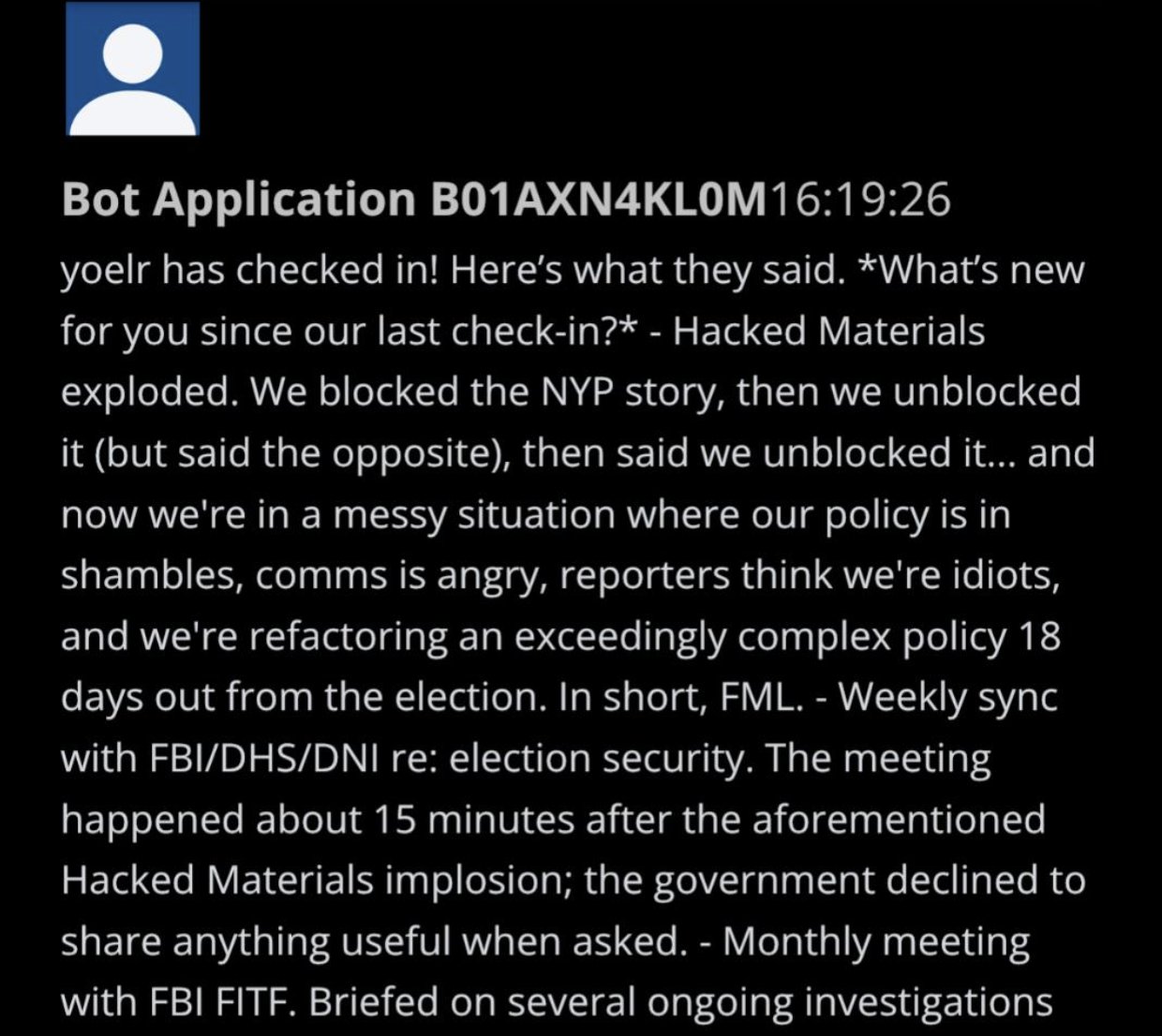
Some of Roth’s later Slacks indicate his weekly confabs with federal law enforcement involved separate meetings. Here, he ghosts the FBI and DHS, respectively, to go first to an “Aspen Institute thing,” then take a call with Apple.
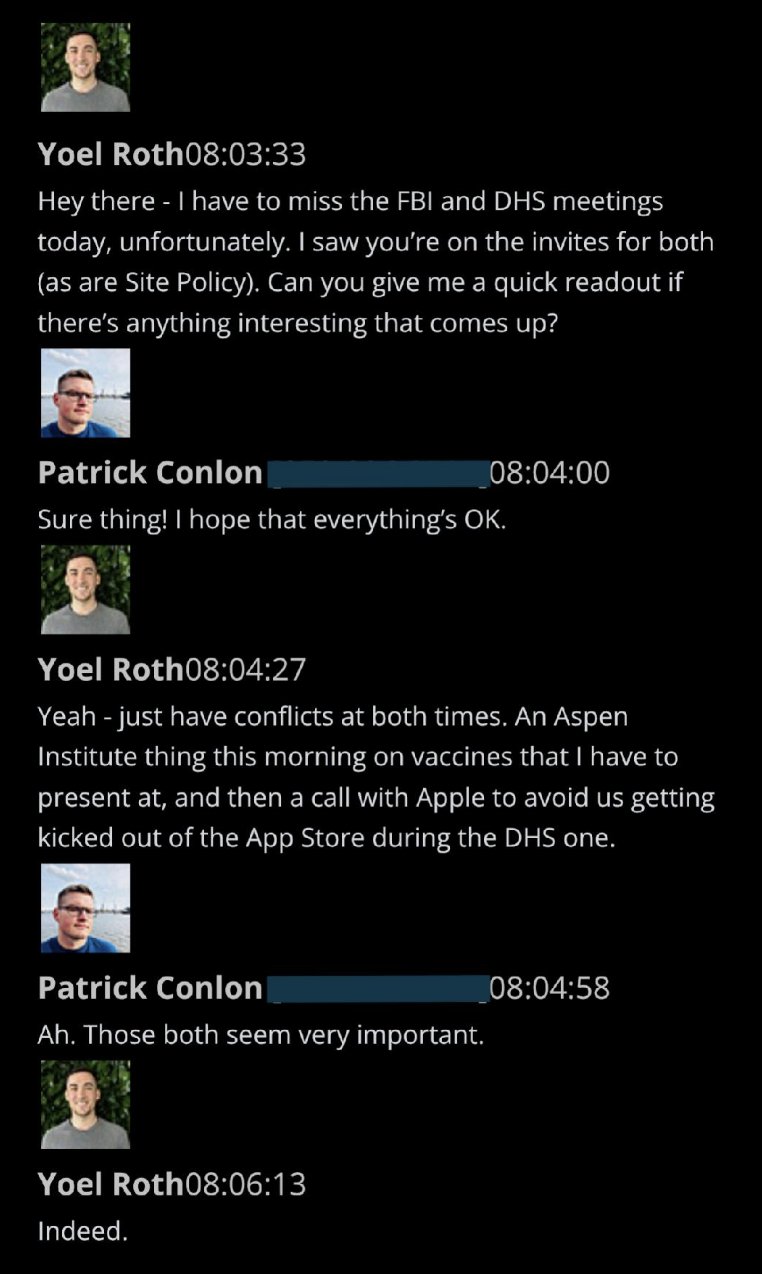
Here, the FBI sends reports about a pair of tweets, the second of which involves a former Tippecanoe County, Indiana Councilor and Republican named John Basham claiming “Between 2% and 25% of Ballots by Mail are Being Rejected for Errors.”

The FBI’s second report concerned this tweet by John Basham:
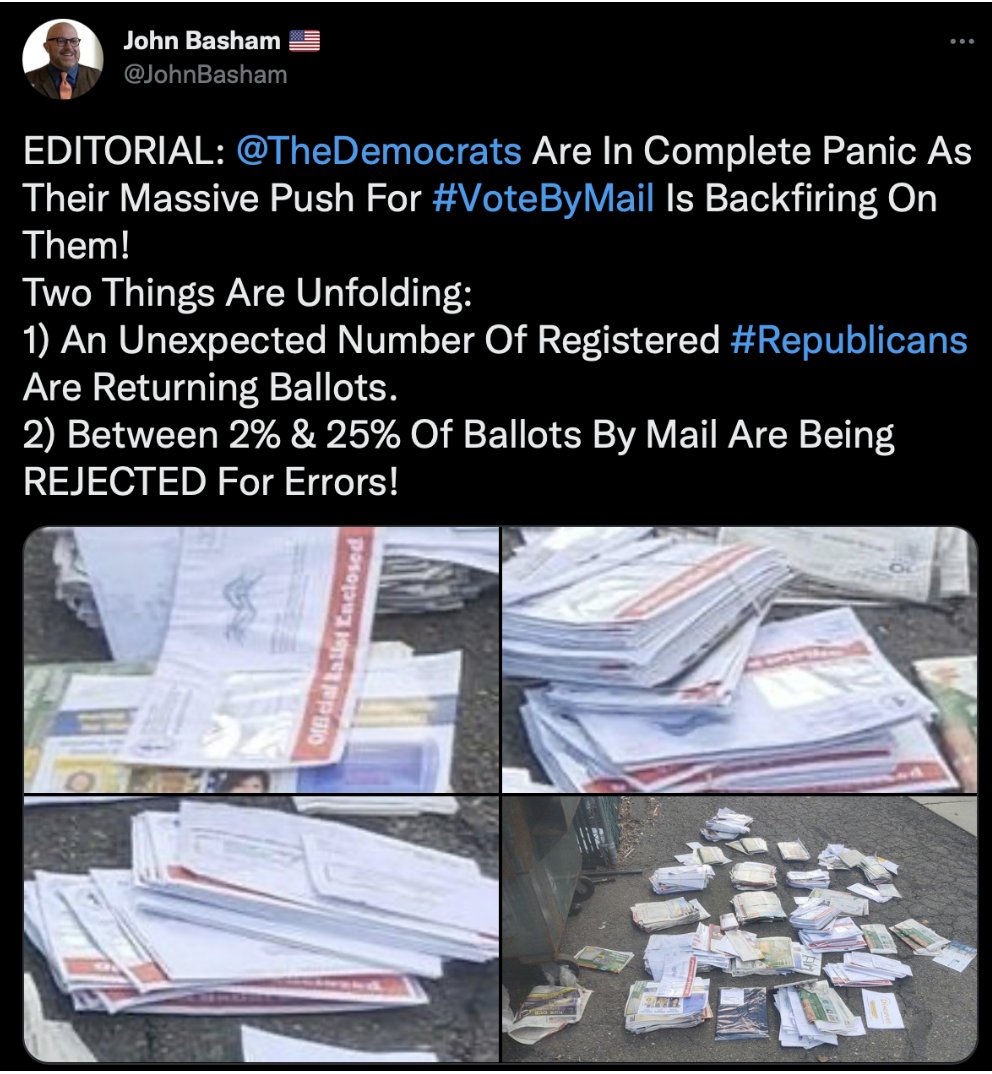
The FBI-flagged tweet then got circulated in the enforcement Slack. Twitter cited Politifact to say the first story was “proven to be false,” then noted the second was already deemed “no vio on numerous occasions.”
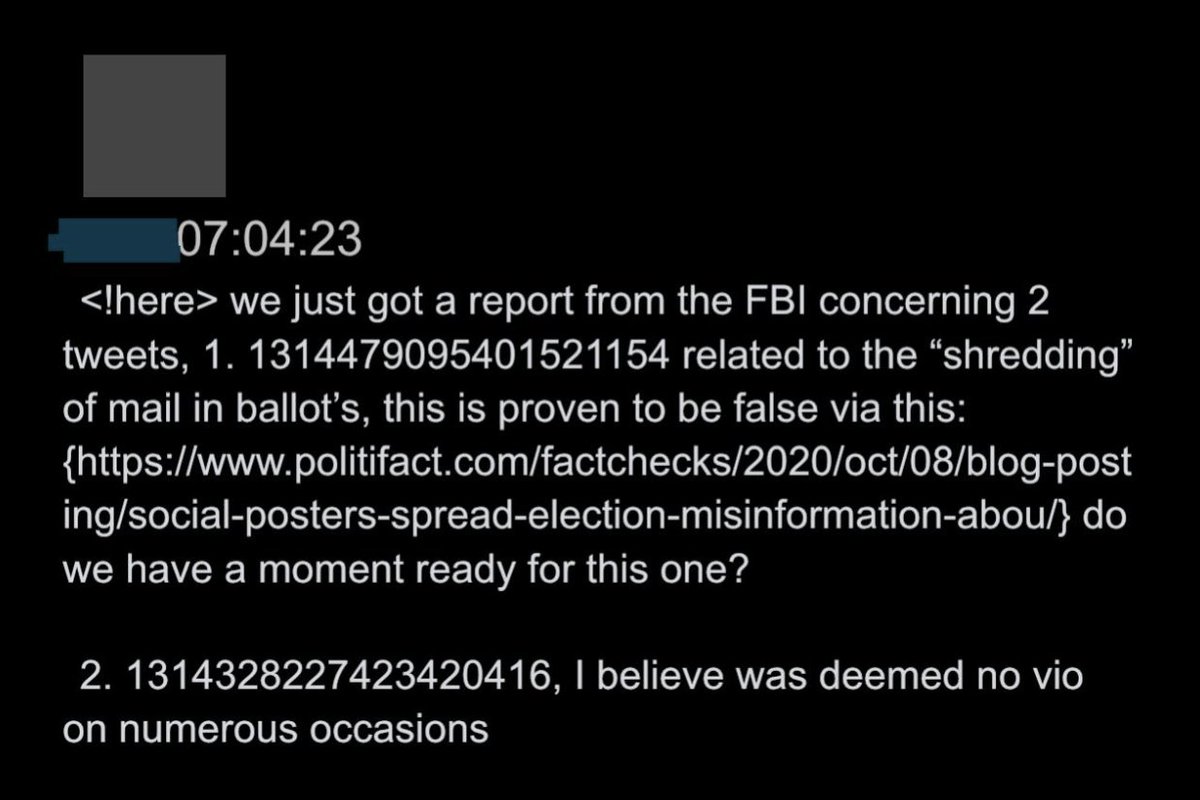
The group then decides to apply a “Learn how voting is safe and secure” label because one commenter says, “it’s totally normal to have a 2% error rate.” Roth then gives the final go-ahead to the process initiated by the FBI:

Examining the entire election enforcement Slack, we didn’t see one reference to moderation requests from the Trump campaign, the Trump White House, or Republicans generally. We looked. They may exist: we were told they do. However, they were absent here…
This inspires a long Slack that reads like a Titania McGrath parody. “I agree it’s a joke,” concedes a Twitter employee, “but he’s also literally admitting in a tweet a crime.”
The group declares Huck’s an “edge case,” and though one notes, “we don’t make exceptions for jokes or satire,” they ultimately decide to leave him be, because “we’ve poked enough bears.” “Could still mislead people… could still mislead people,” the humor-averse group declares, before moving on from Huckabee.

Roth suggests moderation even in this absurd case could depend on whether or not the joke results in “confusion.” This seemingly silly case actually foreshadows serious later issues:
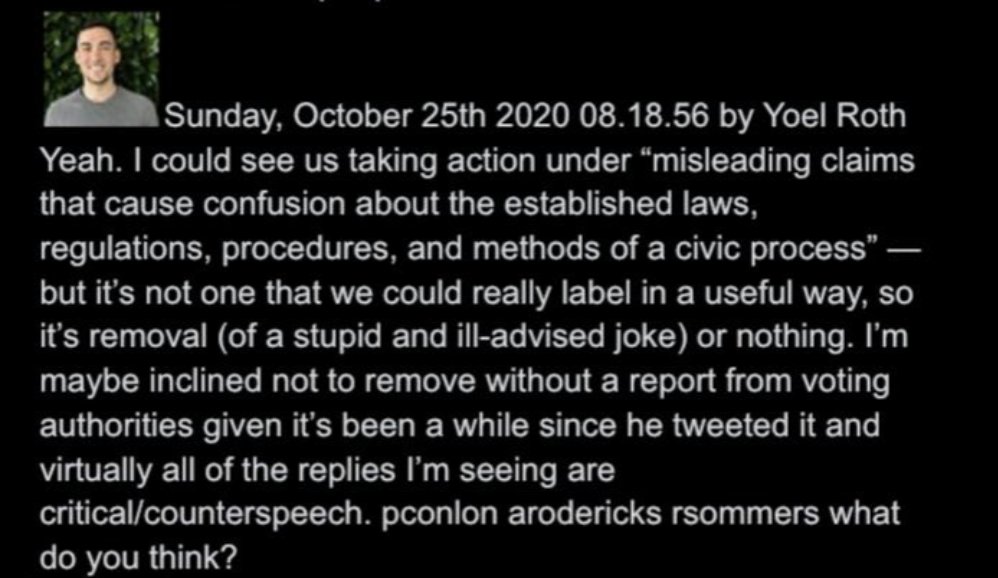
In the docs, execs often expand criteria to subjective issues like intent (yes, a video is authentic, but why was it shown?), orientation (was a banned tweet shown to condemn, or support?), or reception (did a joke cause “confusion”?). This reflex will become key in J6.
In another example, Twitter employees prepare to slap a “mail-in voting is safe” warning label on a Trump tweet about a postal screwup in Ohio, before realizing “the events took place,” which meant the tweet was “factually accurate”:

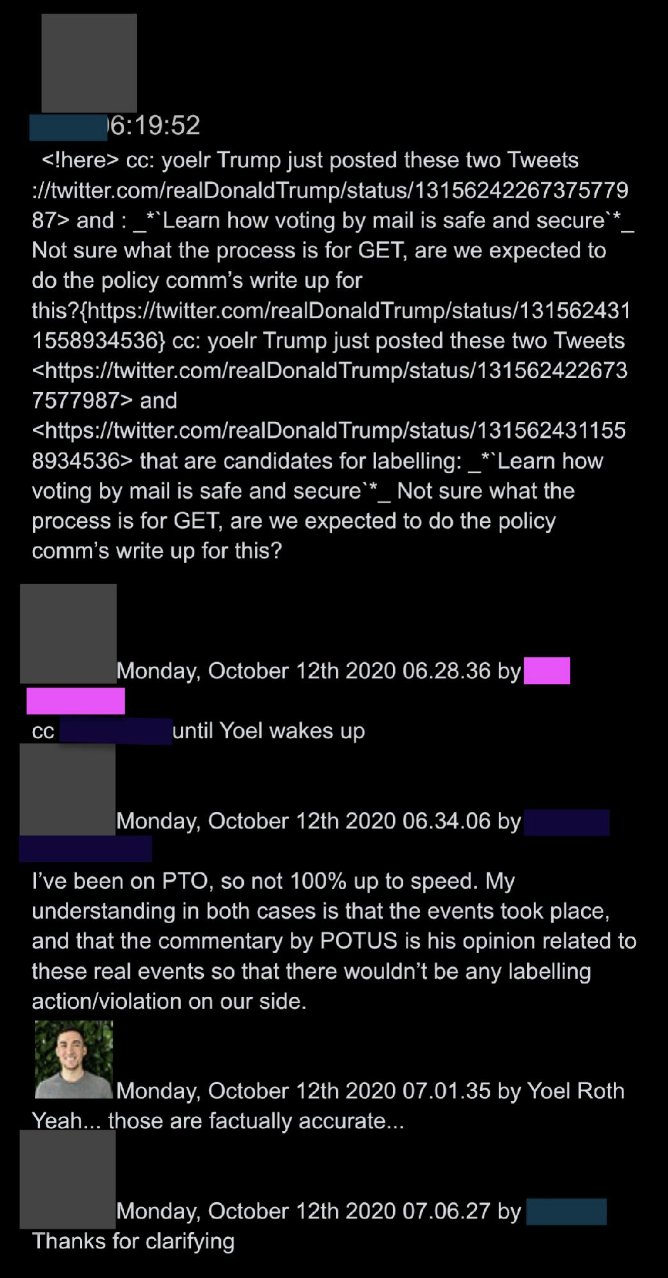
“VERY WELL DONE ON SPEED” Trump was being “visibility filtered” as late as a week before the election. Here, senior execs didn’t appear to have a particular violation, but still worked fast to make sure a fairly anodyne Trump tweet couldn’t be “replied to, shared, or liked”:
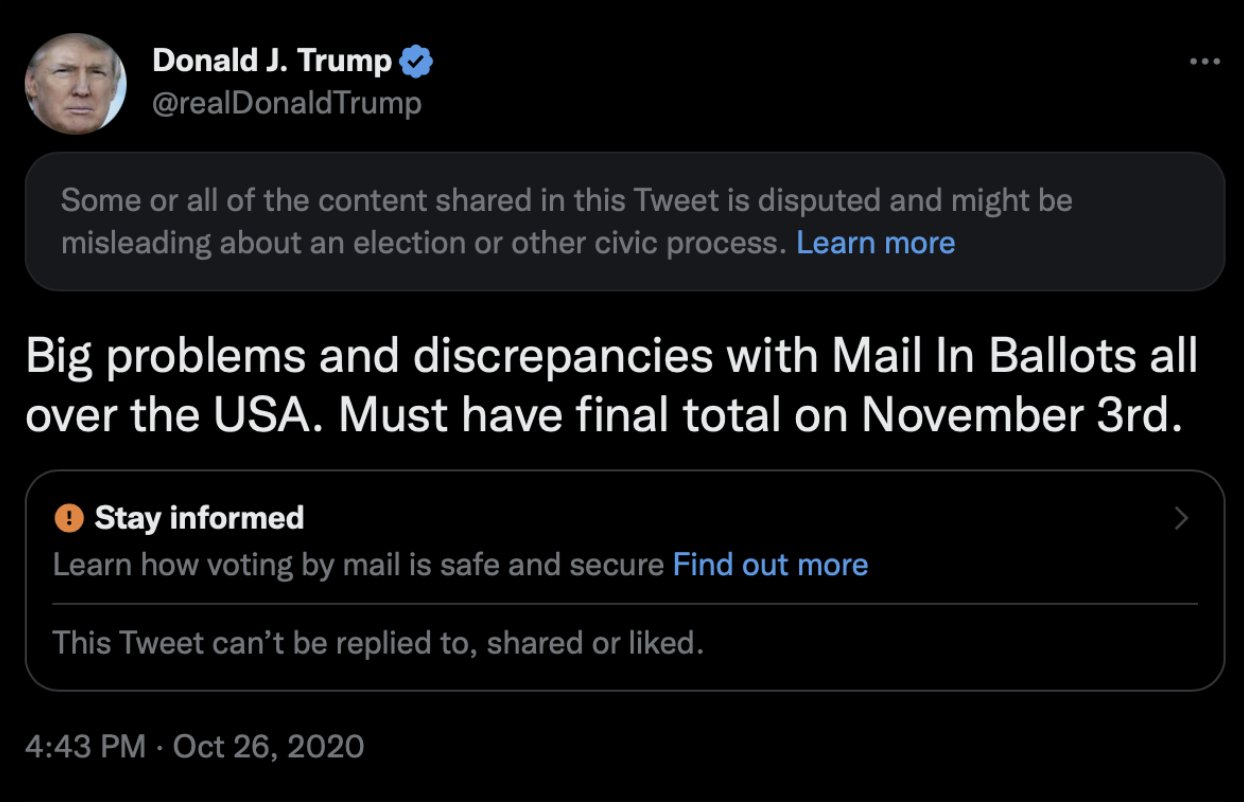
“VERY WELL DONE ON SPEED”: the group is pleased the Trump tweet is dealt with quickly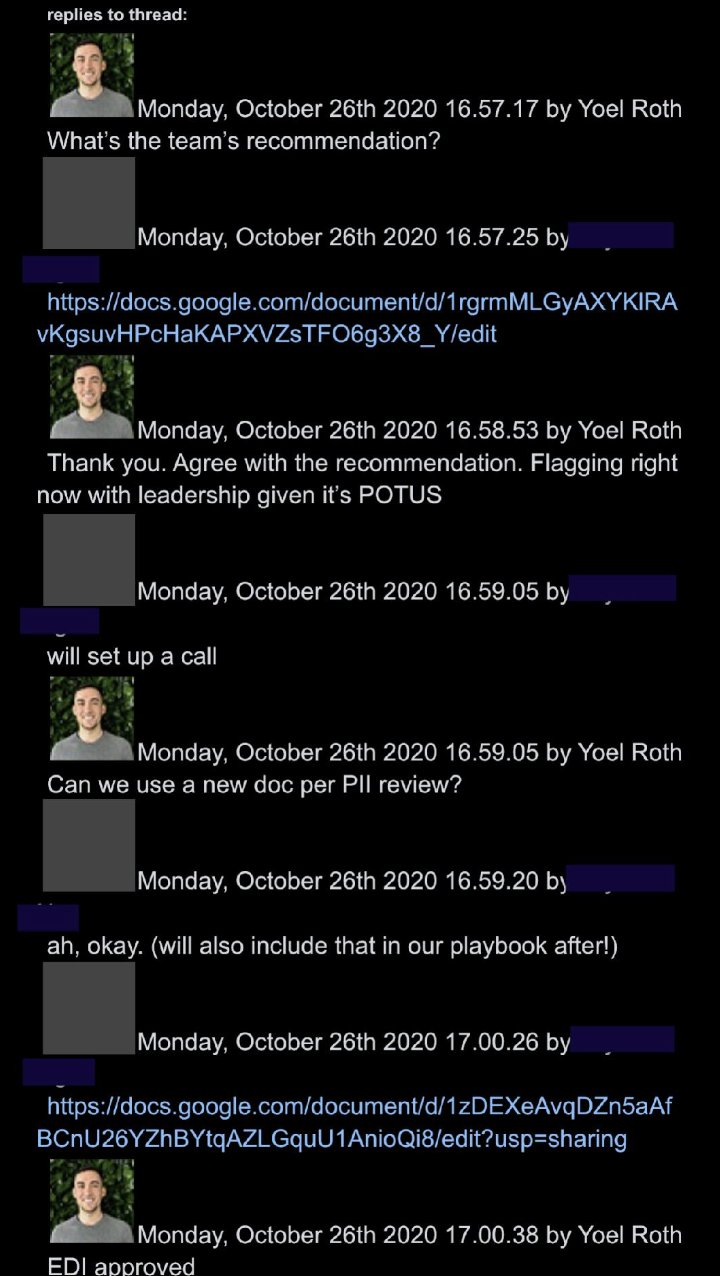
A seemingly innocuous follow-up involved a tweet from actor @realJamesWoods, whose ubiquitous presence in argued-over Twitter data sets is already a #TwitterFiles in-joke.
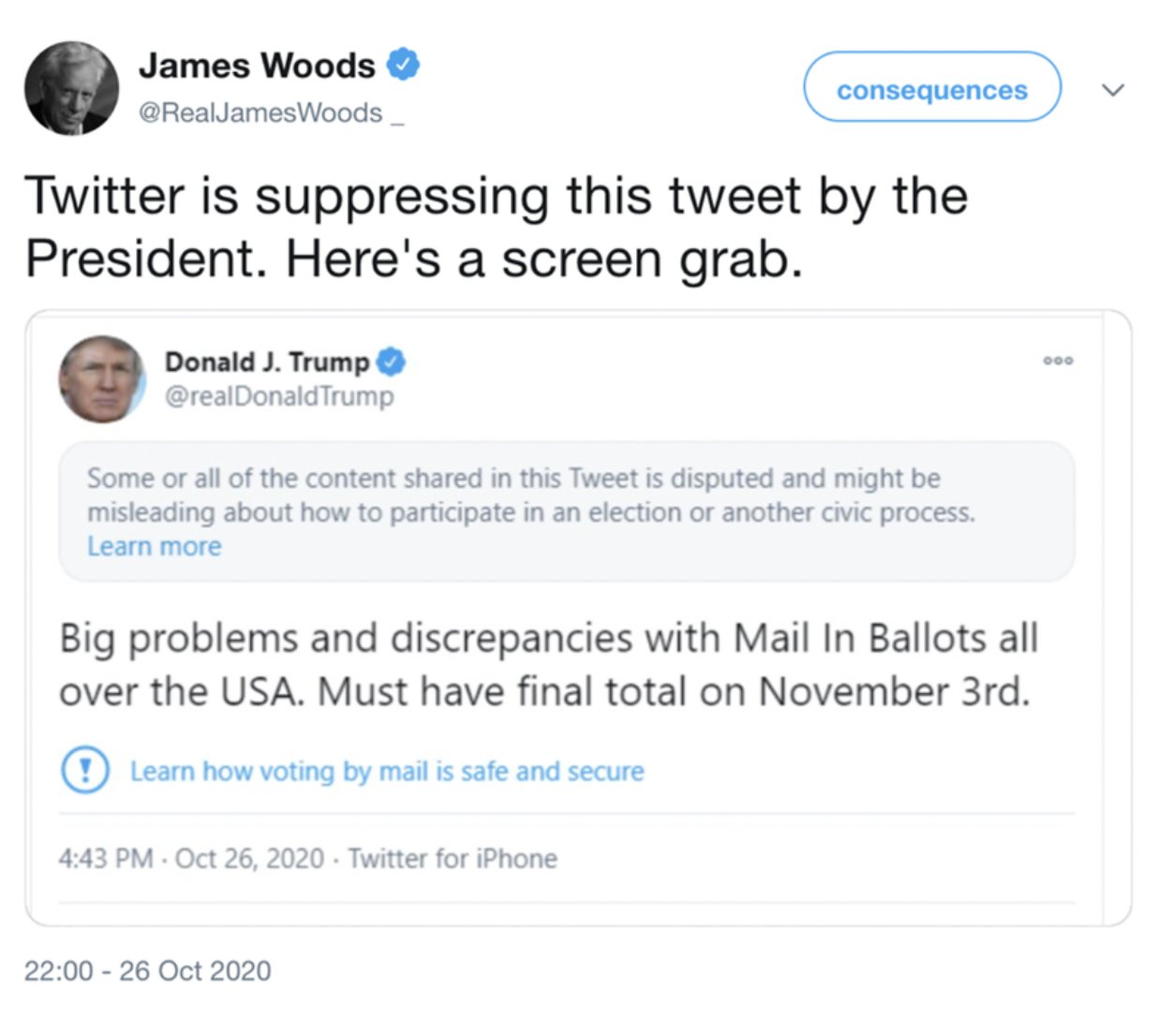
After Woods angrily quote-tweeted about Trump’s warning label, Twitter staff – in a preview of what ended up happening after J6 – despaired of a reason for action, but resolved to “hit him hard on future vio.”
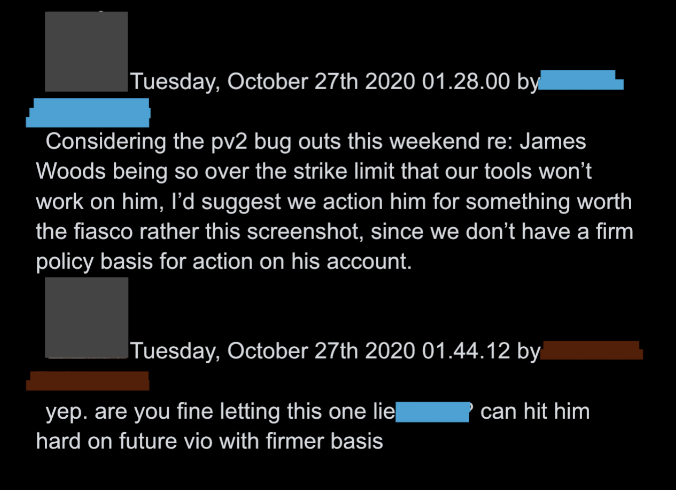
Here a label is applied to Georgia Republican congresswoman Jody Hice for saying, “Say NO to big tech censorship!” and, “Mailed ballots are more prone to fraud than in-person balloting… It’s just common sense.”

Twitter teams went easy on Hice, only applying “soft intervention,” with Roth worrying about a “wah wah censorship” optics backlash:
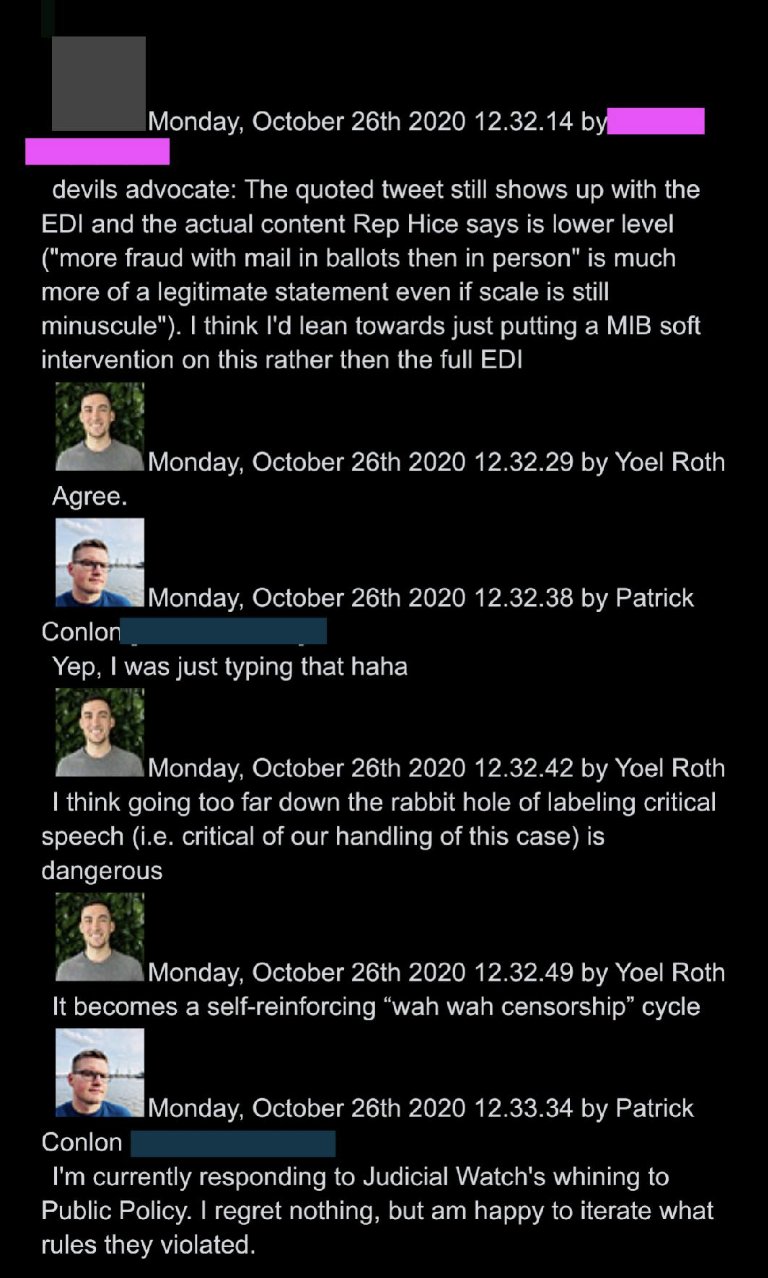
Meanwhile, there are multiple instances of involving pro-Biden tweets warning Trump “may try to steal the election” that got surfaced, only to be approved by senior executives. This one, they decide, just “expresses concern that mailed ballots might not make it on time.”
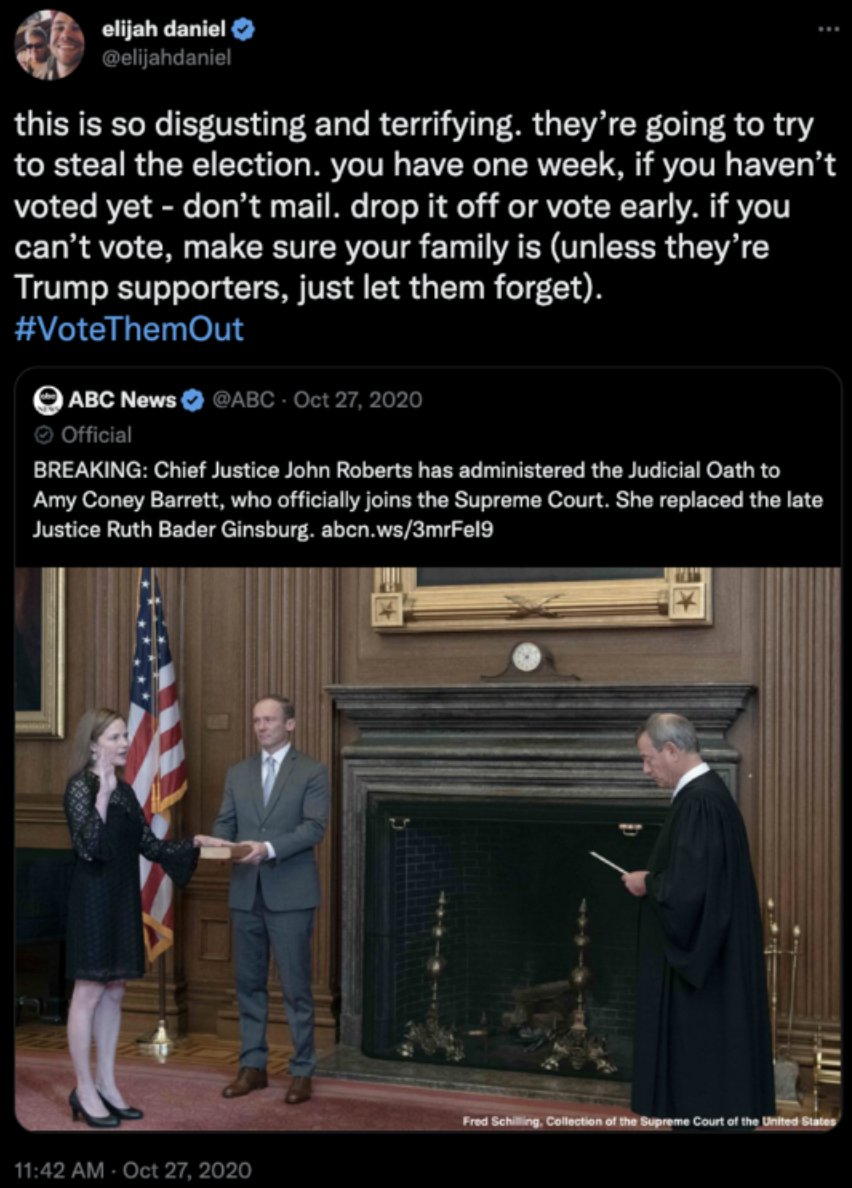
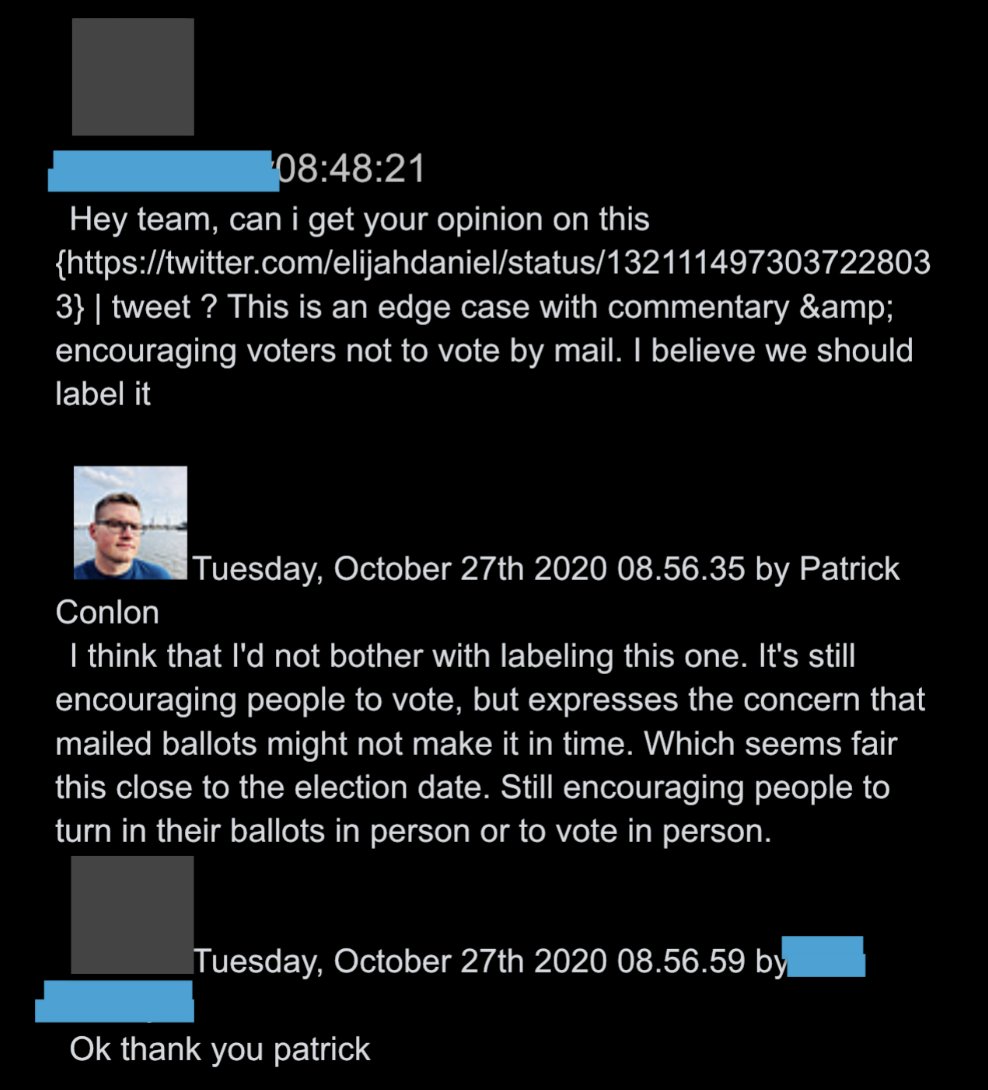
“THAT’S UNDERSTANDABLE”: Even the hashtag #StealOurVotes – referencing a theory that a combo of Amy Coney Barrett and Trump will steal the election – is approved by Twitter brass, because it’s “understandable” and a “reference to… a US Supreme Court decision.”
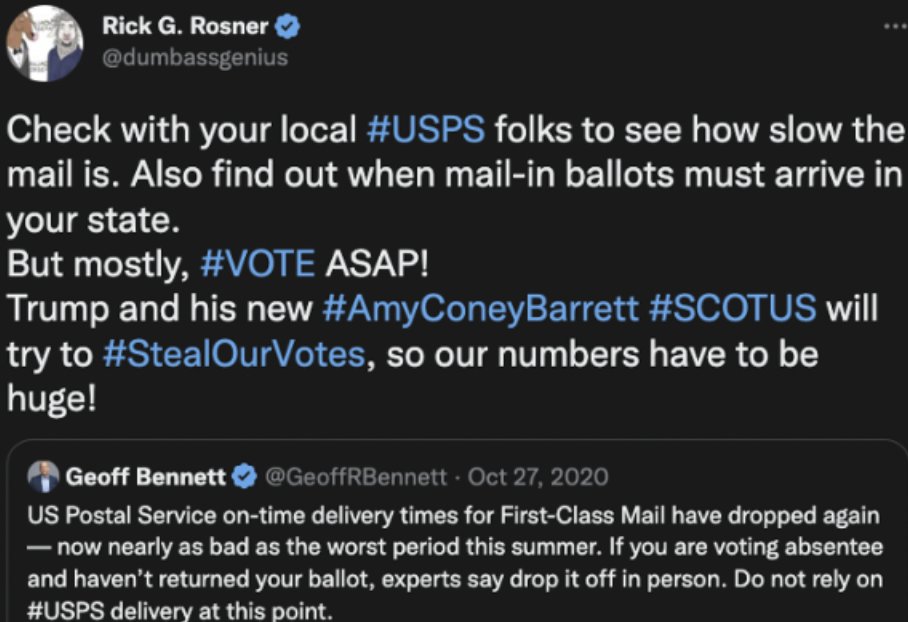

In this exchange, again unintentionally humorous, former Attorney General Eric Holder claimed the U.S. Postal Service was “deliberately crippled,”ostensibly by the Trump administration. He was initially hit with a generic warning label, but it was quickly taken off by Roth:
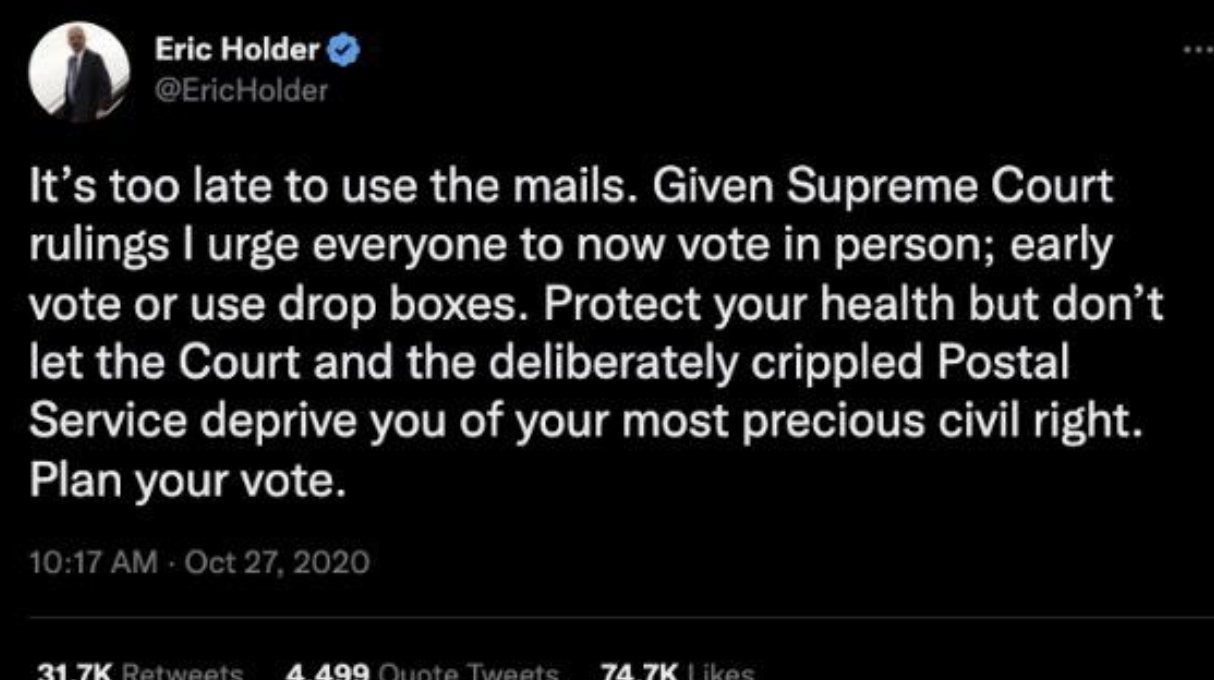
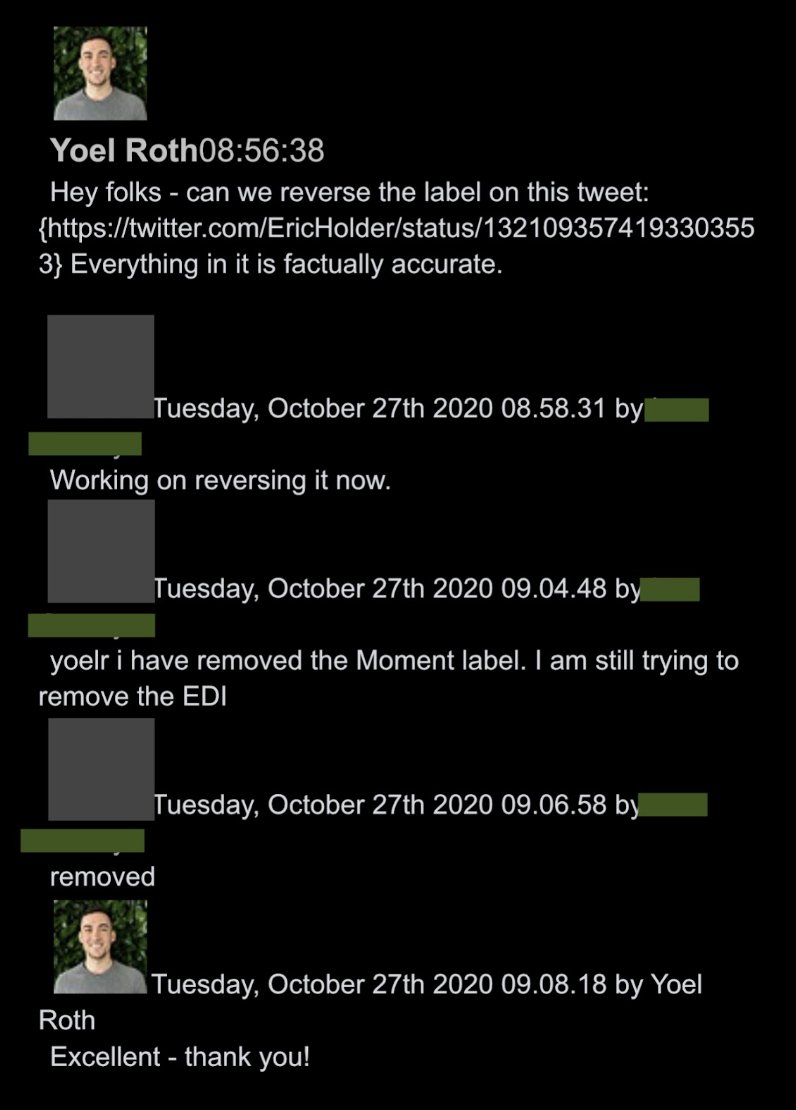
Later in November 2020, Roth asked if staff had a “debunk moment” on the “SCYTL/Smartmantic vote-counting” stories, which his DHS contacts told him were a combination of “about 47” conspiracy theories:
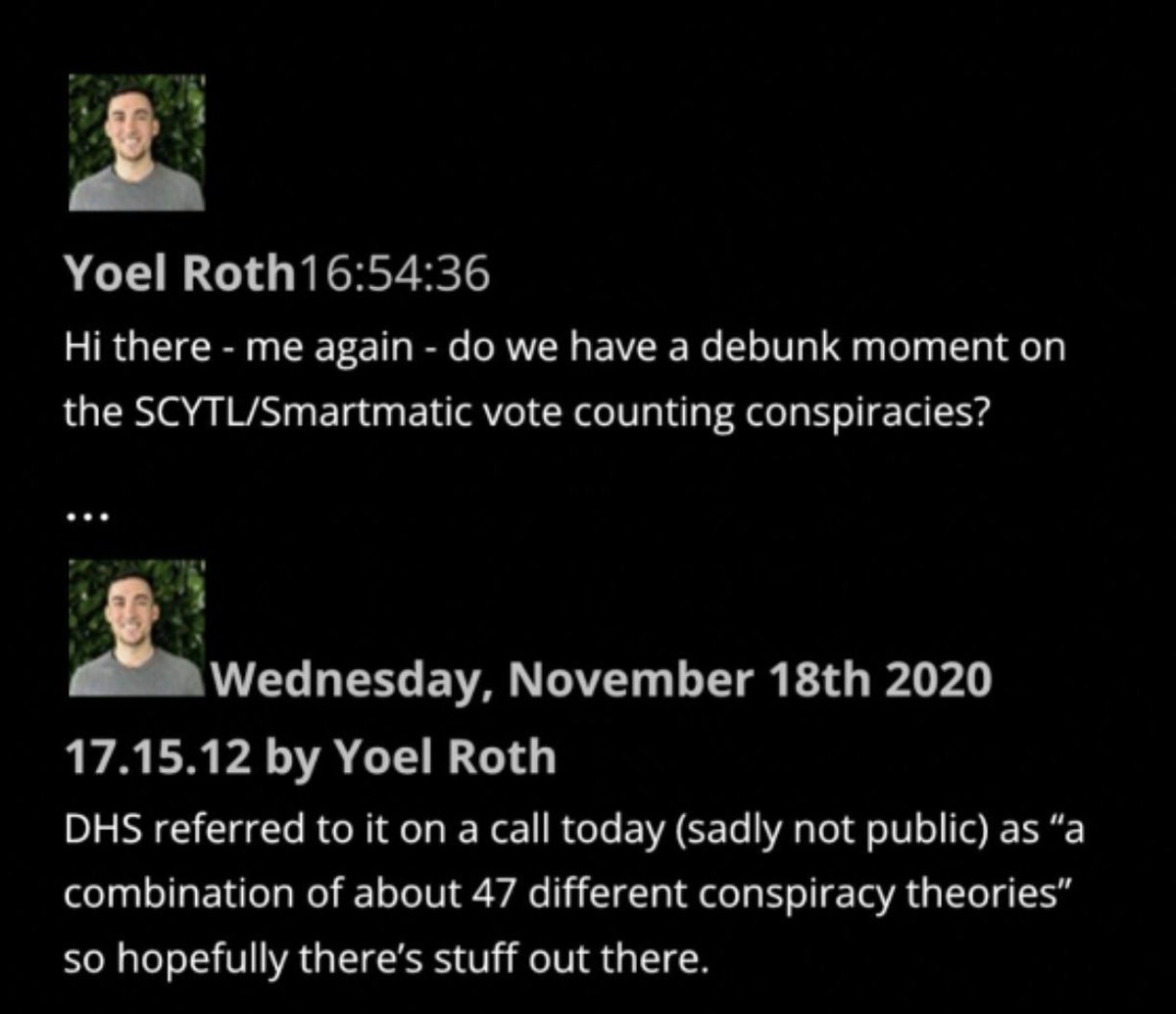
On December 10th, as Trump was in the middle of firing off 25 tweets saying things like, “A coup is taking place in front of our eyes,” Twitter executives announced a new “L3 deamplification” tool. This step meant a warning label now could also come with deamplification:
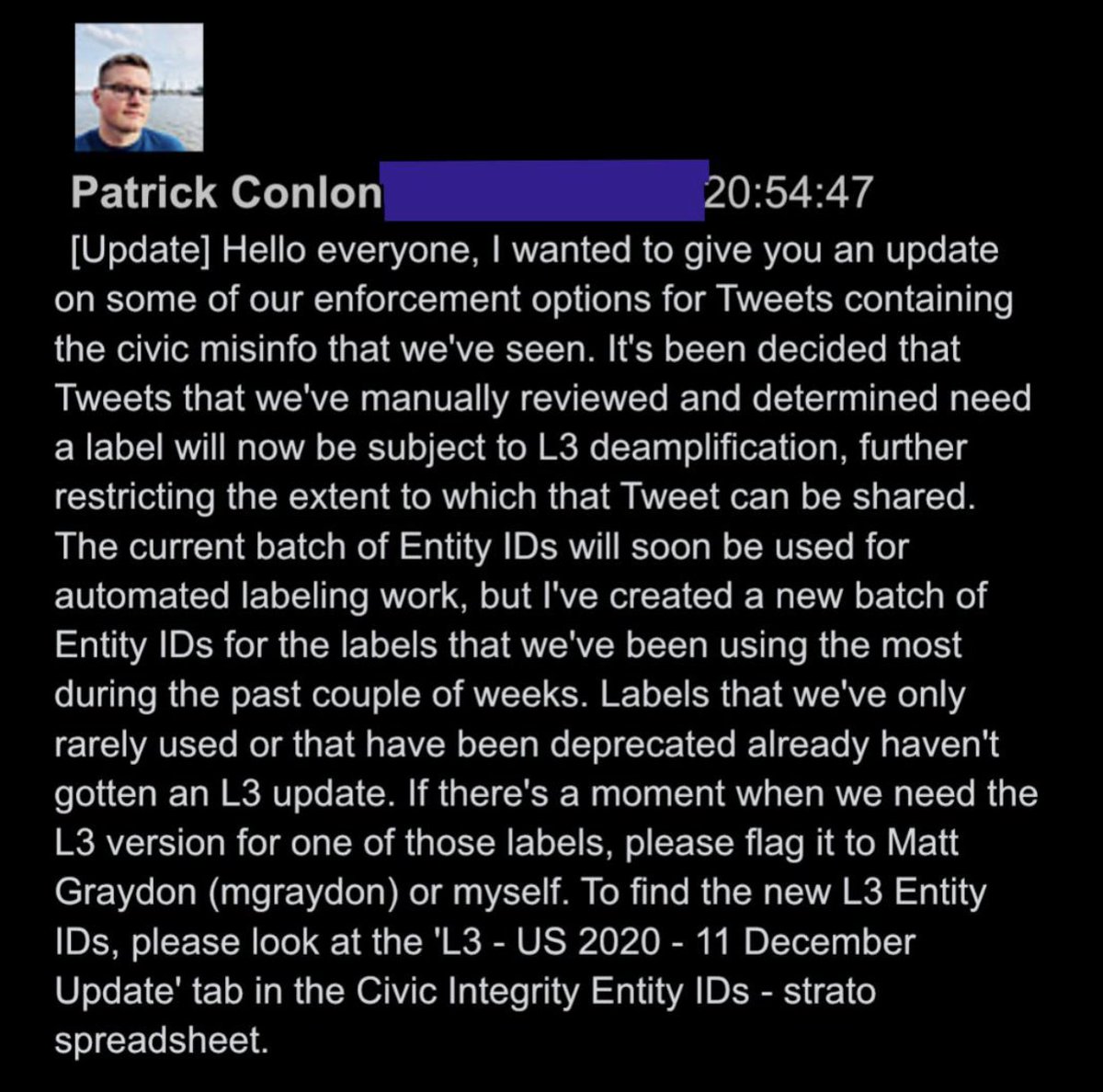
Some executives wanted to use the new deamplification tool to silently limit Trump’s reach more right away, beginning with the following tweet:
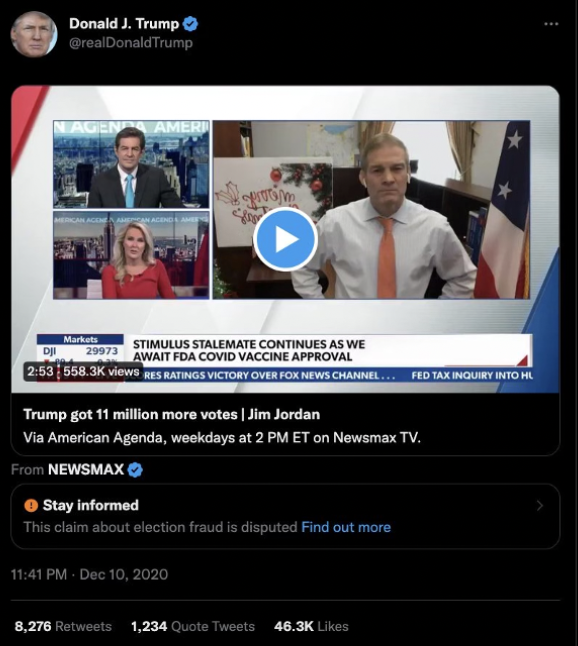
However, in the end, the team had to use older, less aggressive labeling tools at least for that day, until the “L3 entities” went live the following morning.
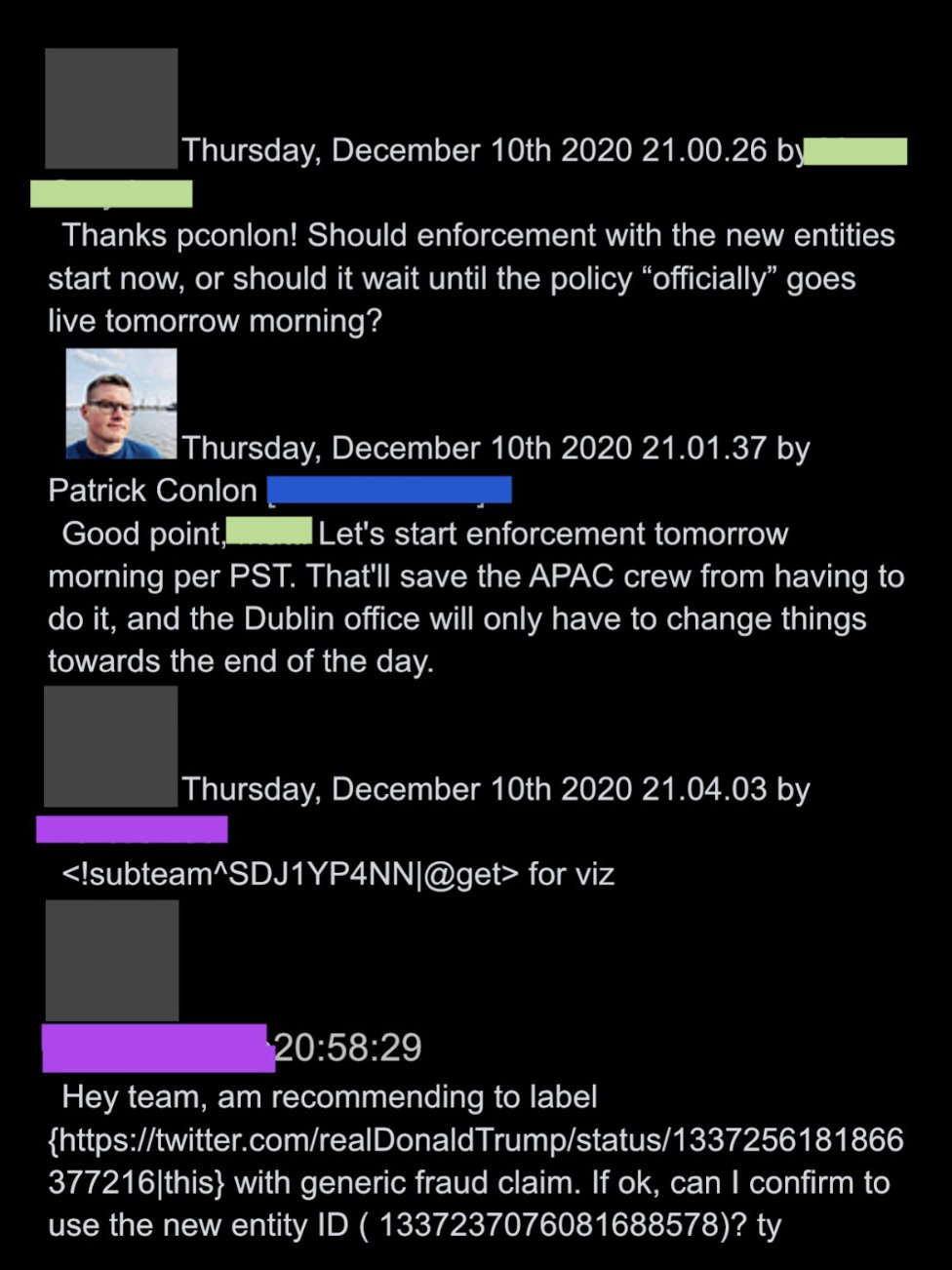
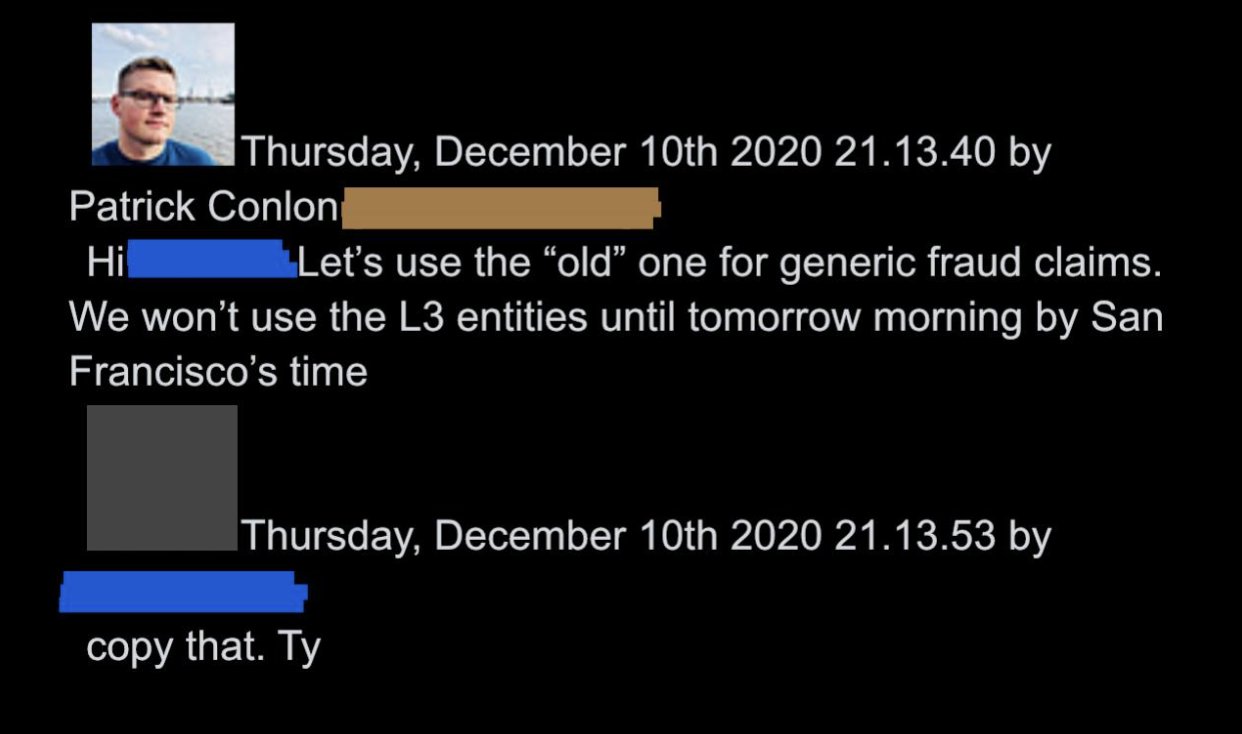
The significance is that it shows that Twitter, in 2020 at least, was deploying a vast range of visible and invisible tools to rein in Trump’s engagement, long before J6. The ban will come after other avenues are exhausted.
In Twitter docs execs frequently refer to “bots,” e.g. “let’s put a bot on that.” A bot is just any automated heuristic moderation rule. It can be anything: every time a person in Brazil uses “green” and “blob” in the same sentence, action might be taken.

In this instance, it appears moderators added a bot for a Trump claim made on Breitbart. The bot ends up becoming an automated tool invisibly watching both Trump and, apparently, Breitbart (“will add media ID to bot”). Trump by J6 was quickly covered in bots.

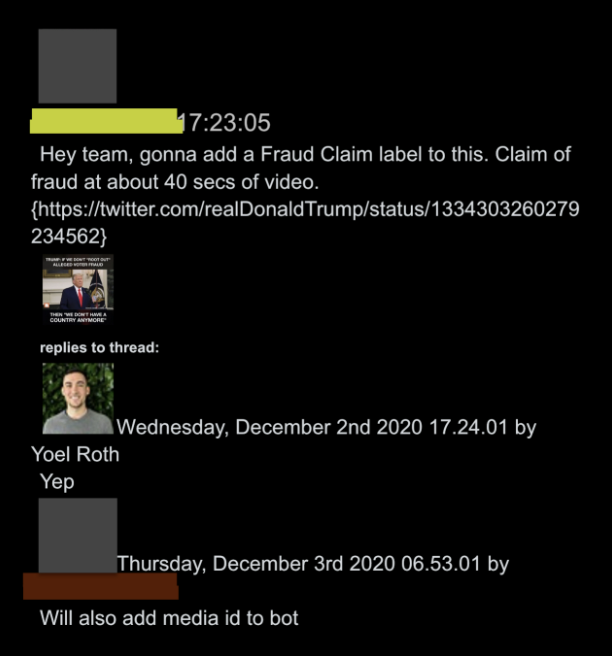
There is no way to follow the frenzied exchanges among Twitter personnel from between January 6thand 8th without knowing the basics of the company’s vast lexicon of acronyms and Orwellian unwords. To “bounce” an account is to put it in timeout, usually for a 12-hour review/cool-off:

“Interstitial,” one of many nouns used as a verb in Twitterspeak (“denylist” is another), means placing a physical label atop a tweet, so it can’t be seen. PII has multiple meanings, one being “Public Interest Interstitial,” i.e. a covering label applied for “public interest” reasons. The post below also references “proactive V,” i.e. proactive visibility filtering.
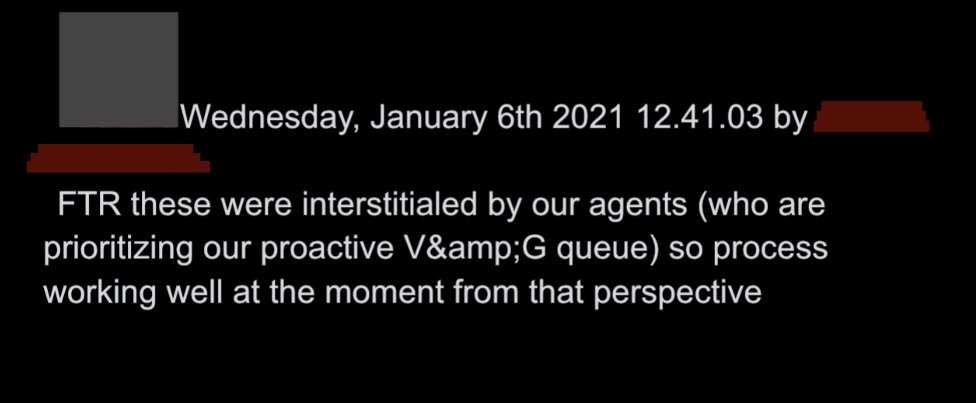
This is all necessary background to J6. Before the riots, the company was engaged in an inherently insane/impossible project, trying to create an ever-expanding, ostensibly rational set of rules to regulate every conceivable speech situation that might arise between humans.
When panic first breaks out on J6 there’s a fair share of WTF-type posts, mixed in with frantic calls for Twitter to start deploying its full arsenal of moderation tools. “What is the right remediation? Do we interstitial the video?” asks one employee, in despair:

This “Freedom or Death” tweet from #StopTheSteal gadfly Mike Coudrey elicits heated reactions:
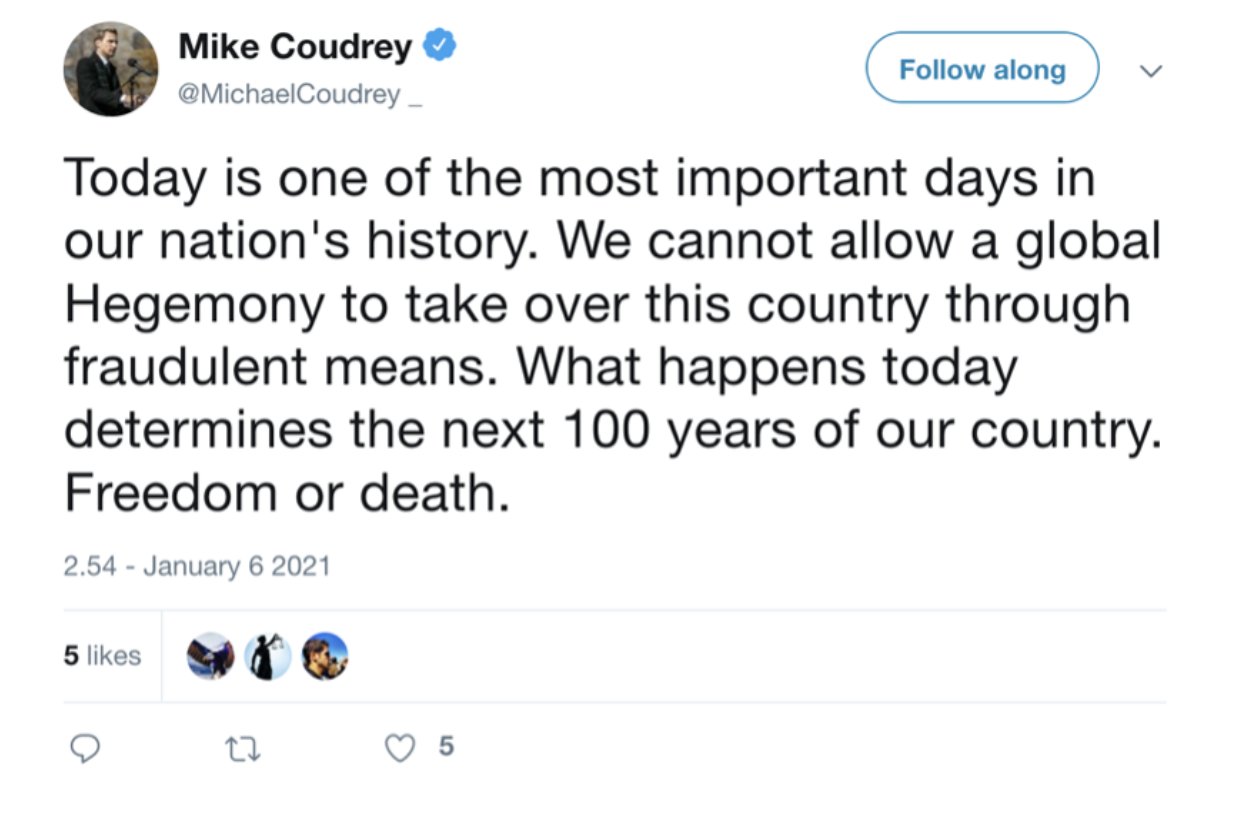
At 2:39 p.m. PST, a comms official asked Roth to confirm or deny a story that they’d restricted Trump’s ability to tweet. Roth says, “We have not.”
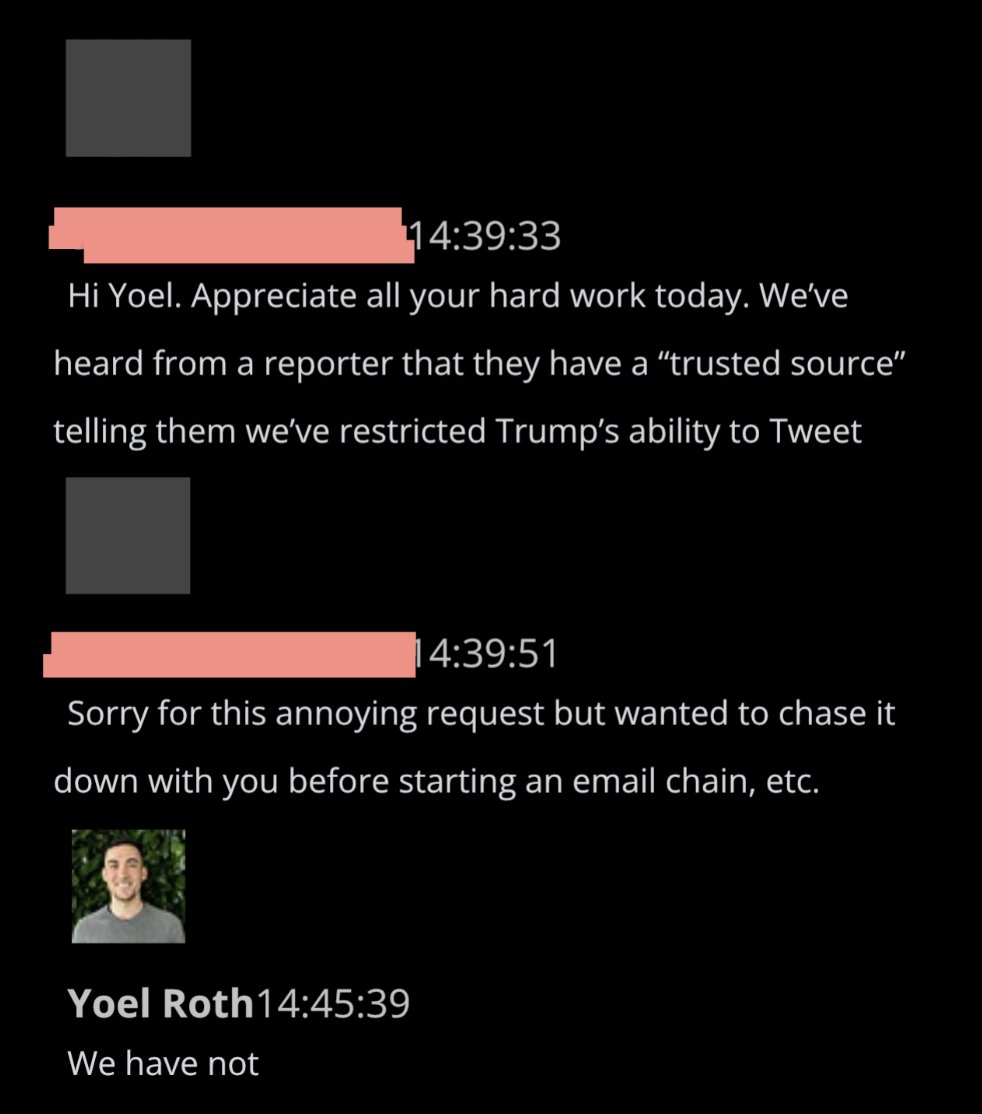
Minutes later, Roth executed the historic act of “bouncing” Trump, i.e. putting him in timeout. “I hope you… are appropriately CorpSec’d,” says a colleague.

This theme of Policy perhaps being stressed by queries from Communications executives – who themselves have to answer the public’s questions – occasionally appears. Two days later, you see chatter about pulling Comms out of the loop:
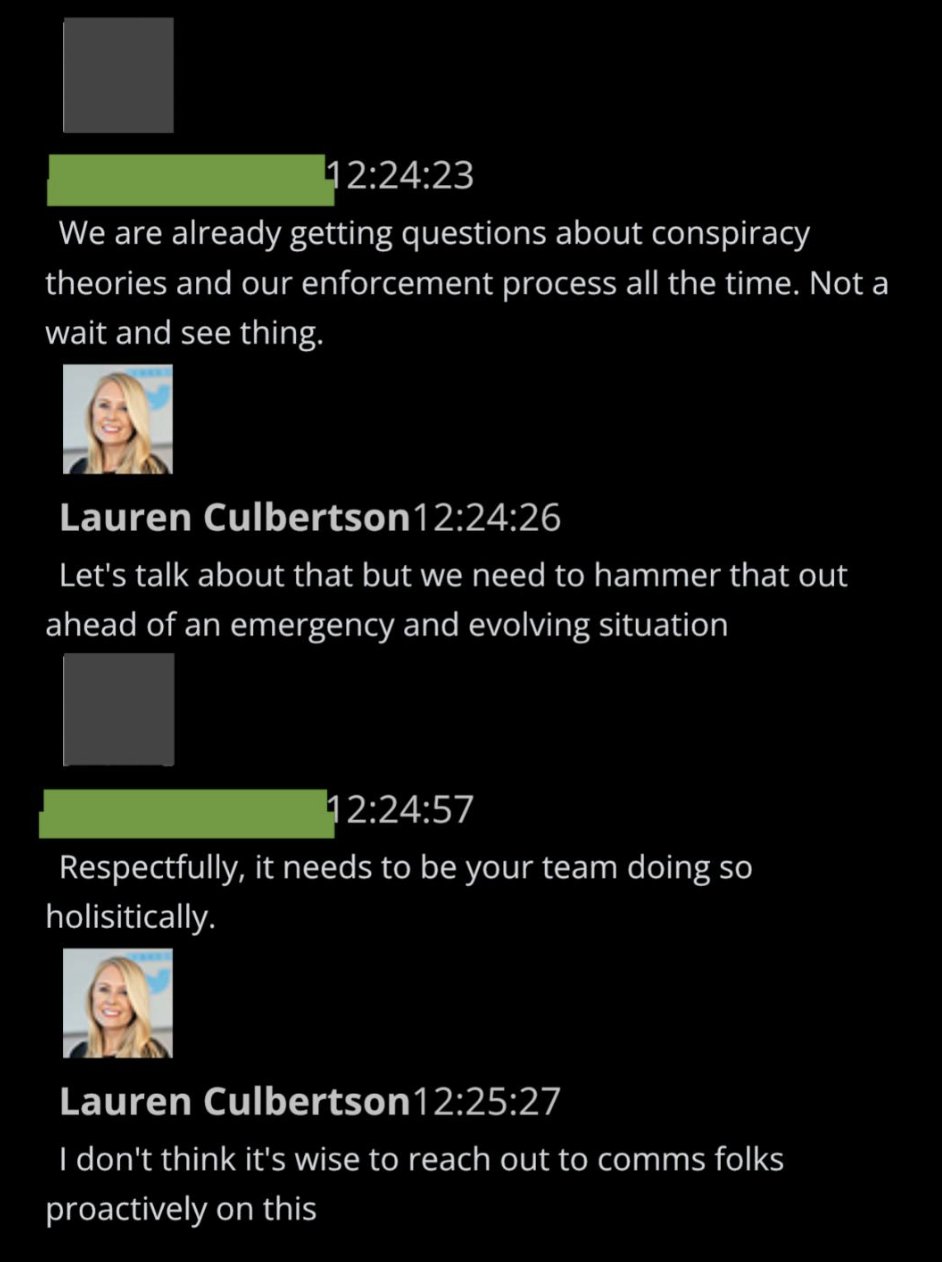
The first company-wide email from Gadde on January 6th announced that 3 Trump tweets had been bounced, but more importantly signaled a determination to use legit “violations” as a guide for any possible permanent suspension:
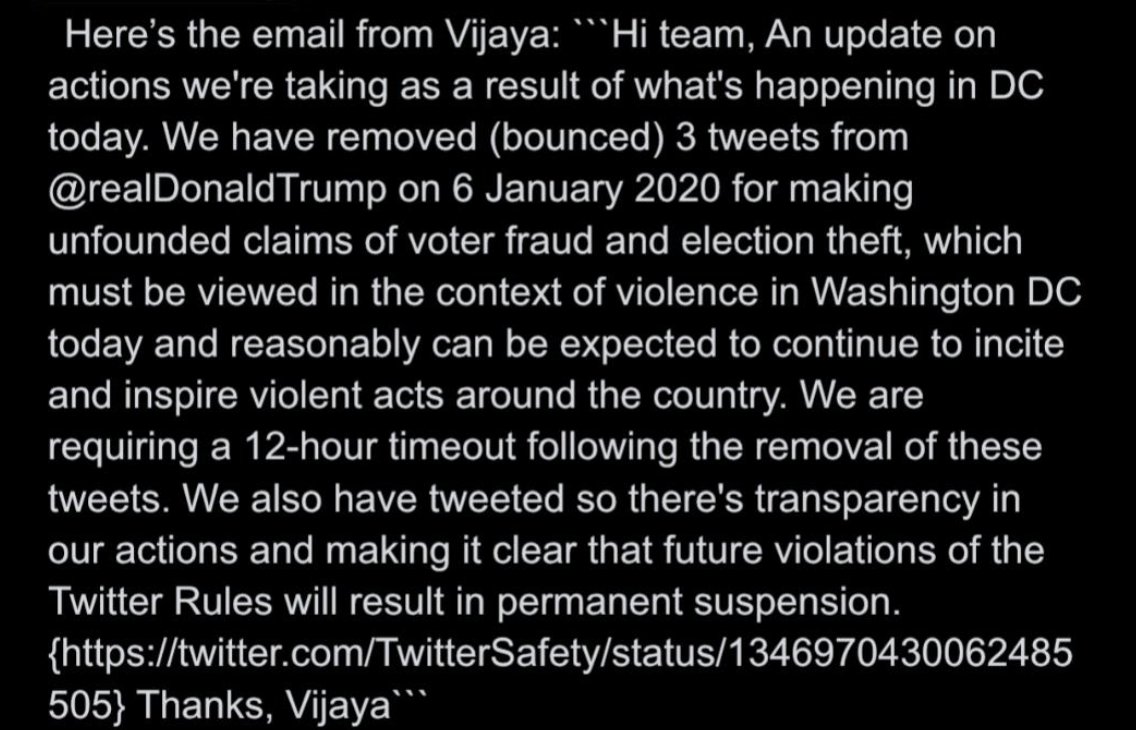
A few last notes about January 6th. Roth at one point looked and found Trump had a slew of duplicate bot applications:
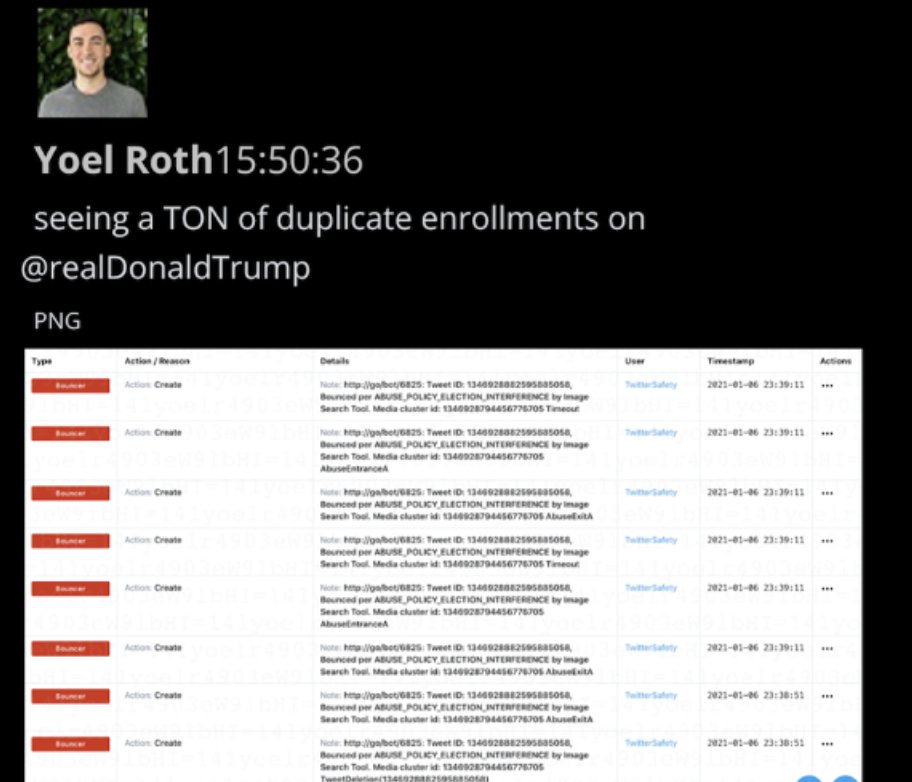
By the end of the first day, the top execs are still trying to apply rules. By the next day, they will contemplate a major change in approach. By January 8th, which @BariWeiss will describe Sunday, Twitter will be receiving plaudits from “our partners” in Washington, and the sitting U.S. president will no longer be heard on the platform.
Lastly, people on the left, right, and in between want to know what else is in the #TwitterFiles, from suppression/shadow-banning of leftists to lab-leak theorists, or amplification of military propaganda or conservative accounts. We know everyone has questions.
And while we’ve stumbled on tidbits here and there about topics ranging from COVID to foreign policy, the reality is the data sets are enormous and we’re still working through them.
(YWN World Headquarters – NYC)

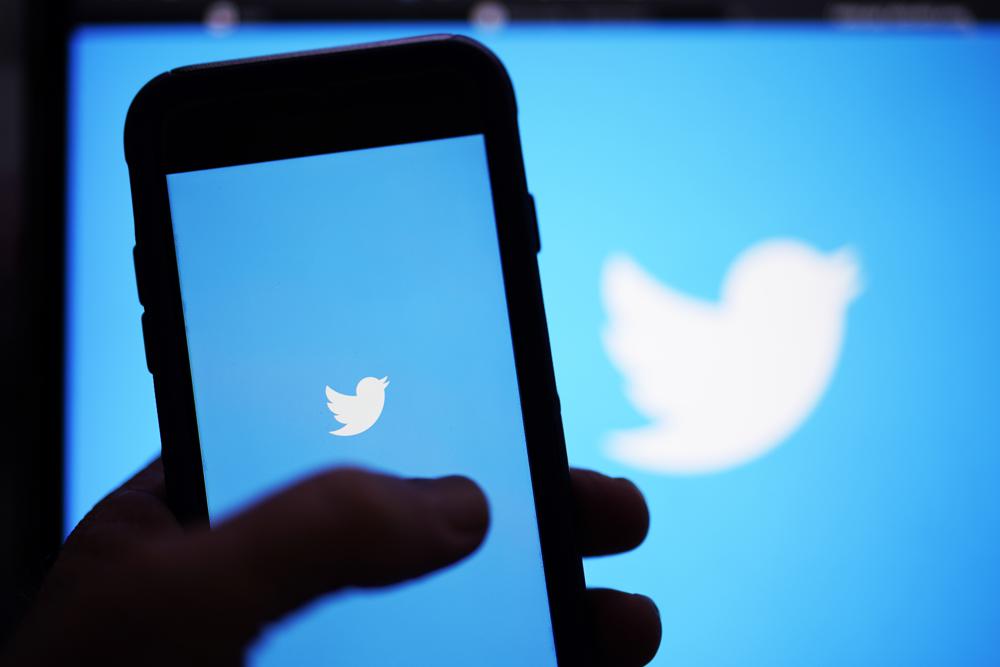




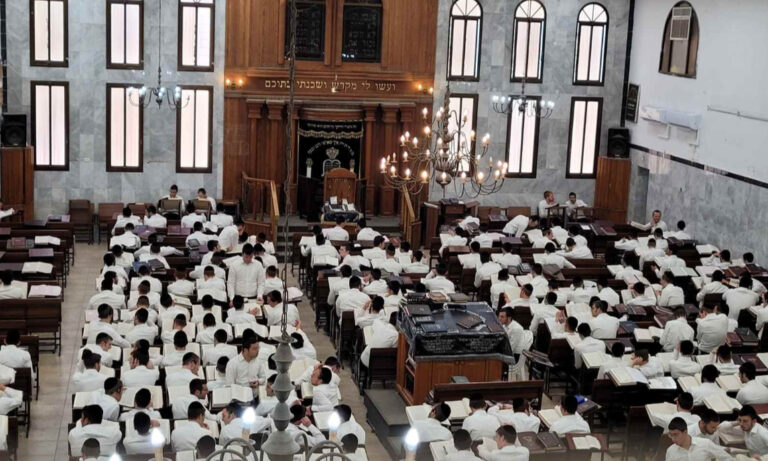
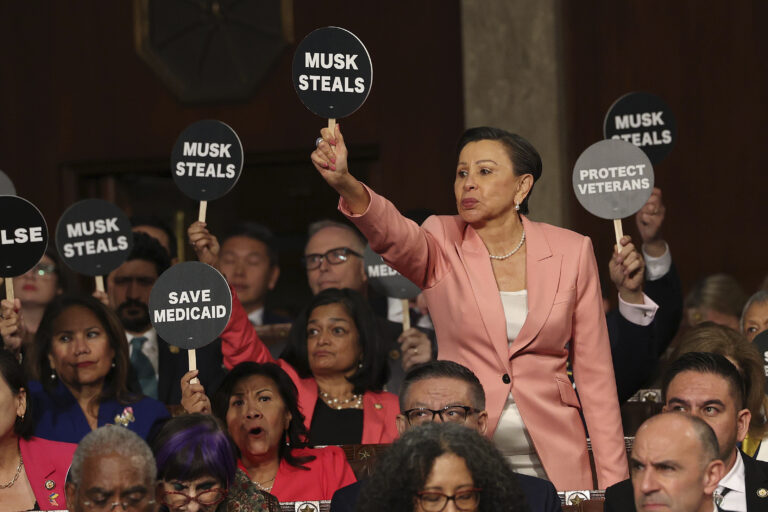
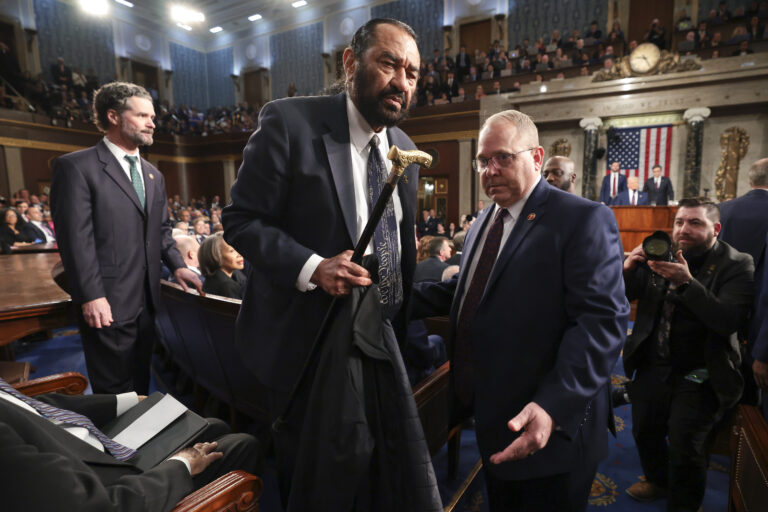
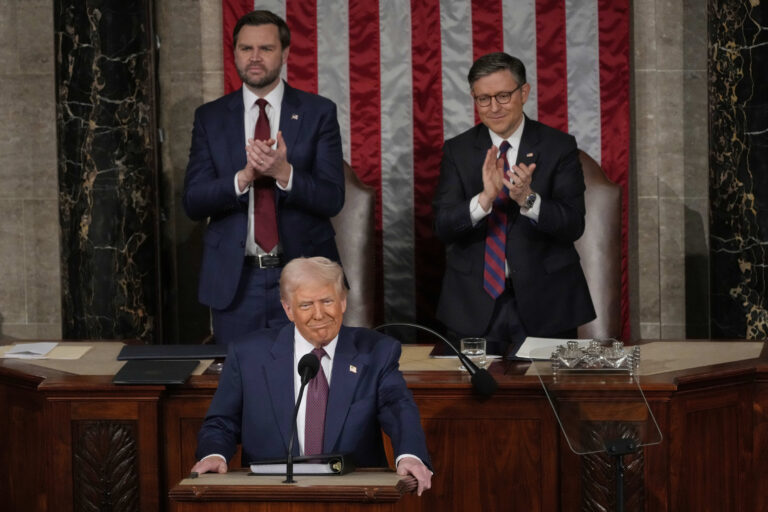


7 Responses
Notice AP isnt writing this article
I wonder why?
I wonder if they’re shadow banning this article too
evil…..even Musk is one of them…
this country is lost.
time for us galus Jews to head on back home. Let Eisav drown in its pathetic gaava. see this weeks HafTorah
Massive scandal
Sara Rivka
What?! He’s the one exposing all this treachery, corruption and censorship.
So Trump was right. The election was rigged. A DNC-Social Media collusion.
this mishkav zacharnik yoel roth is responsible for the election steal